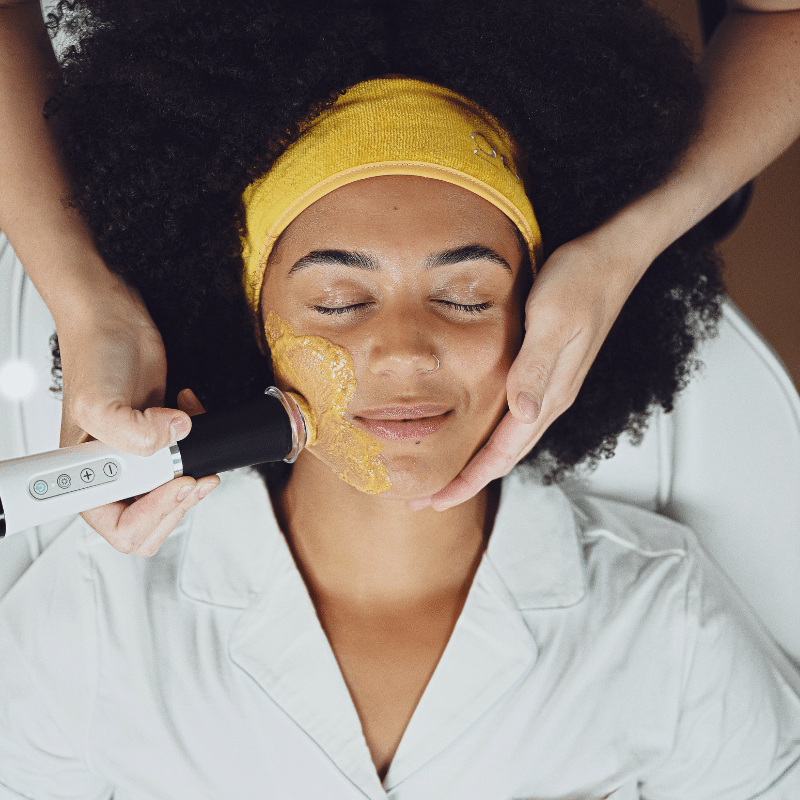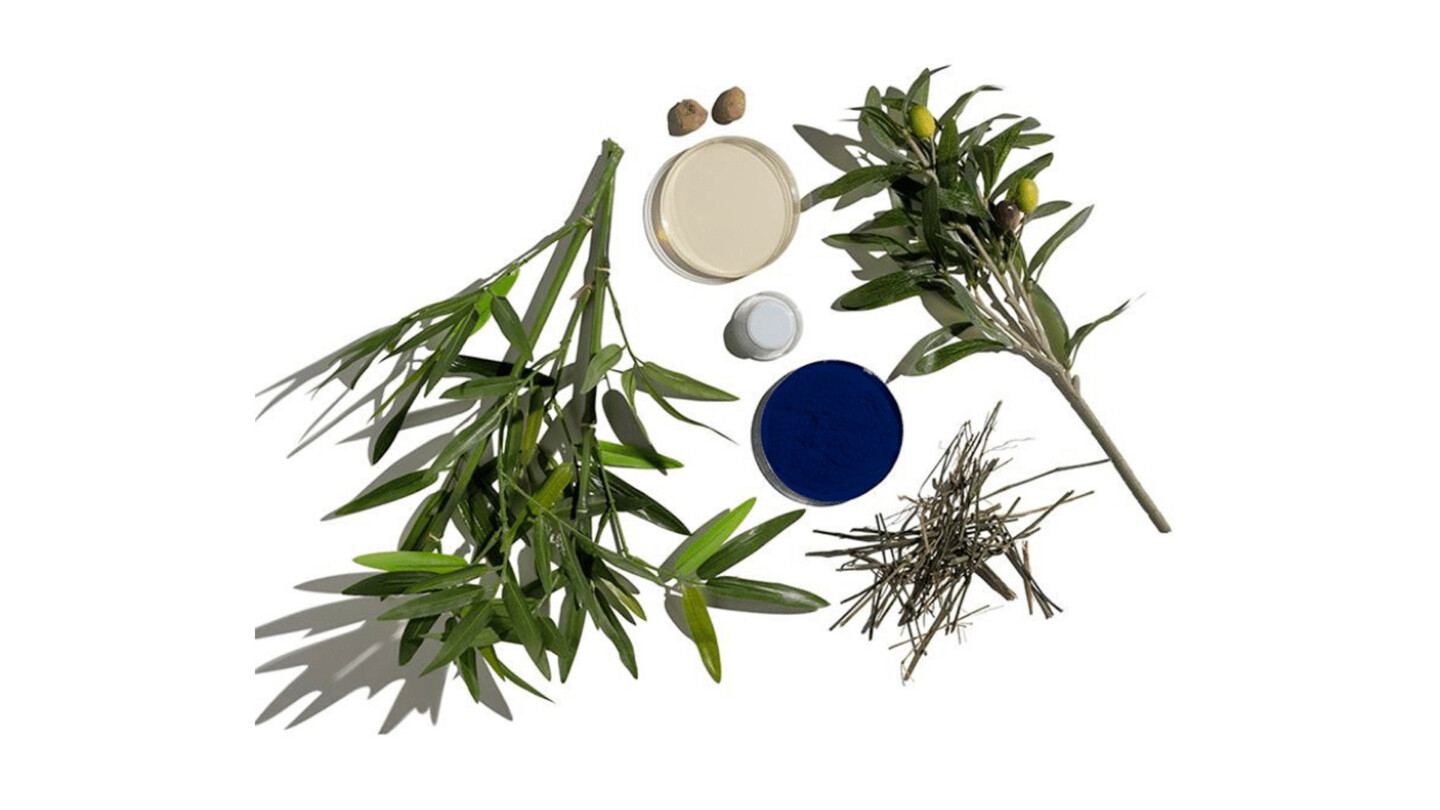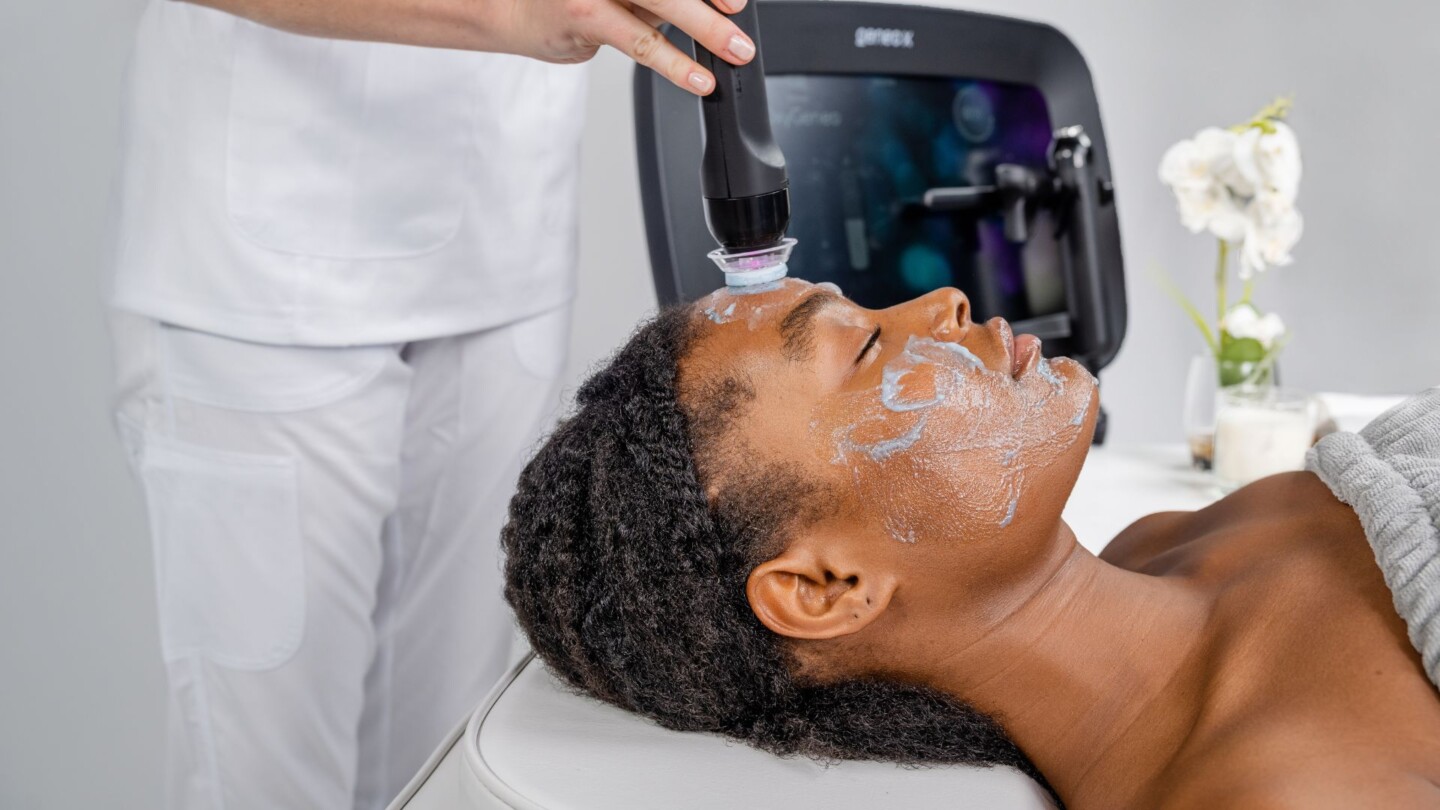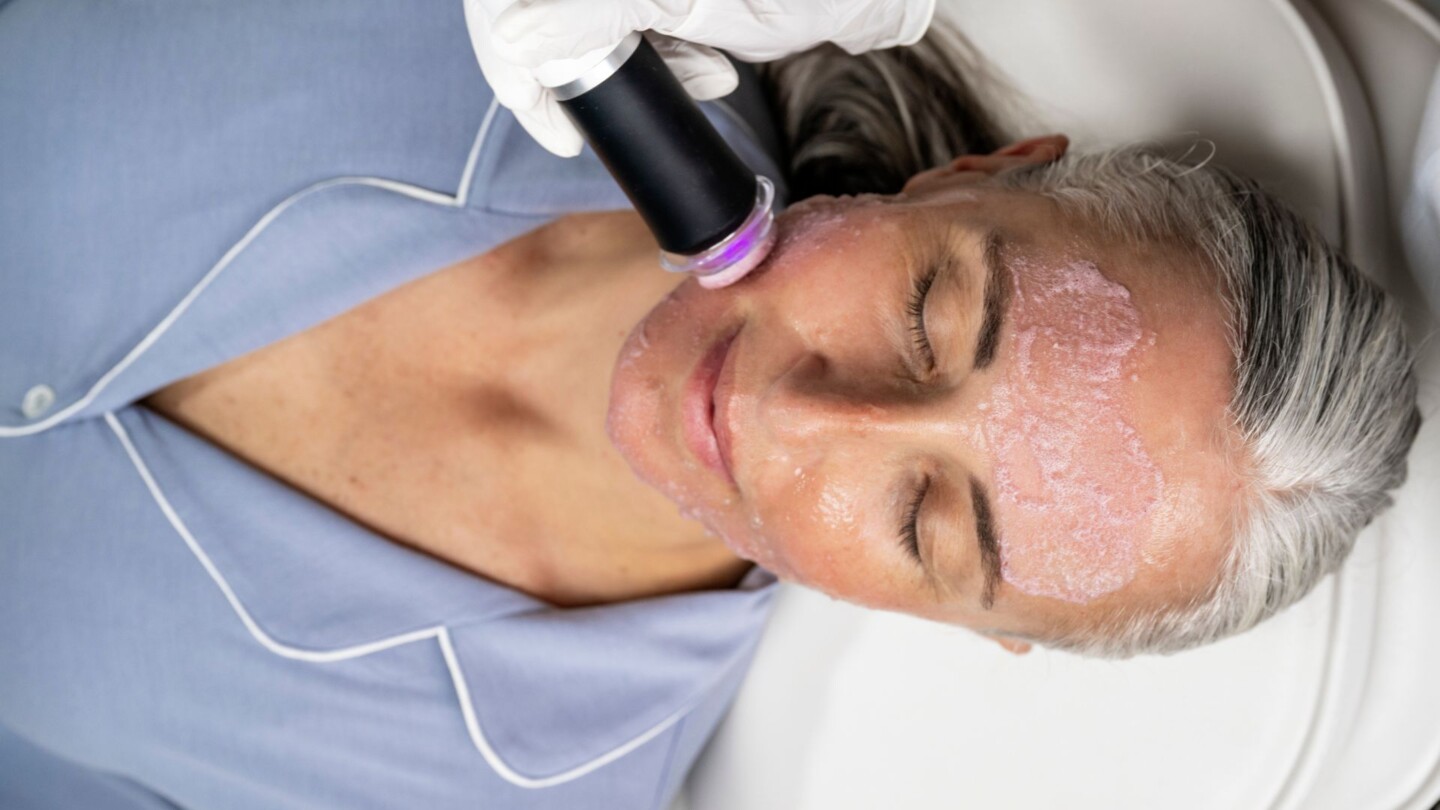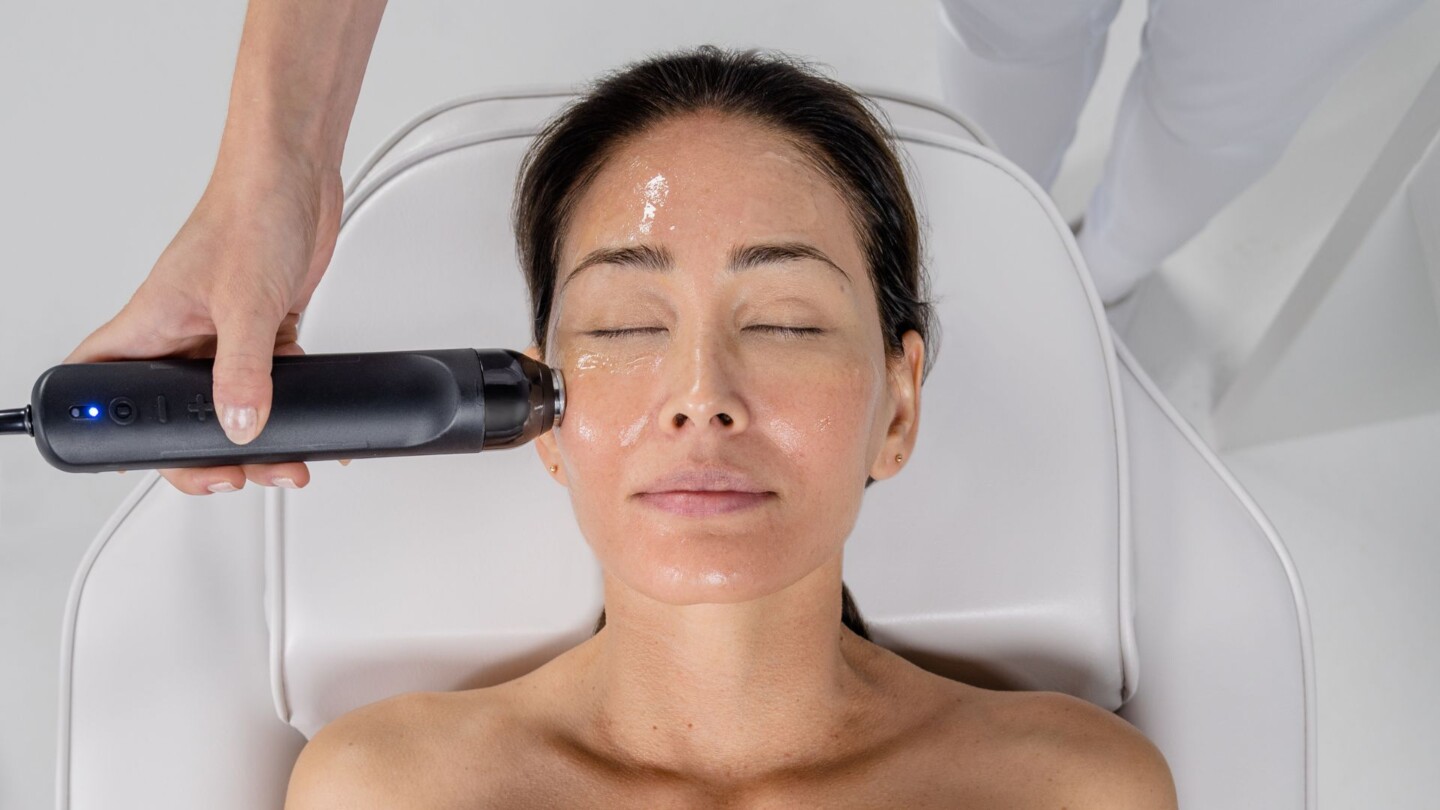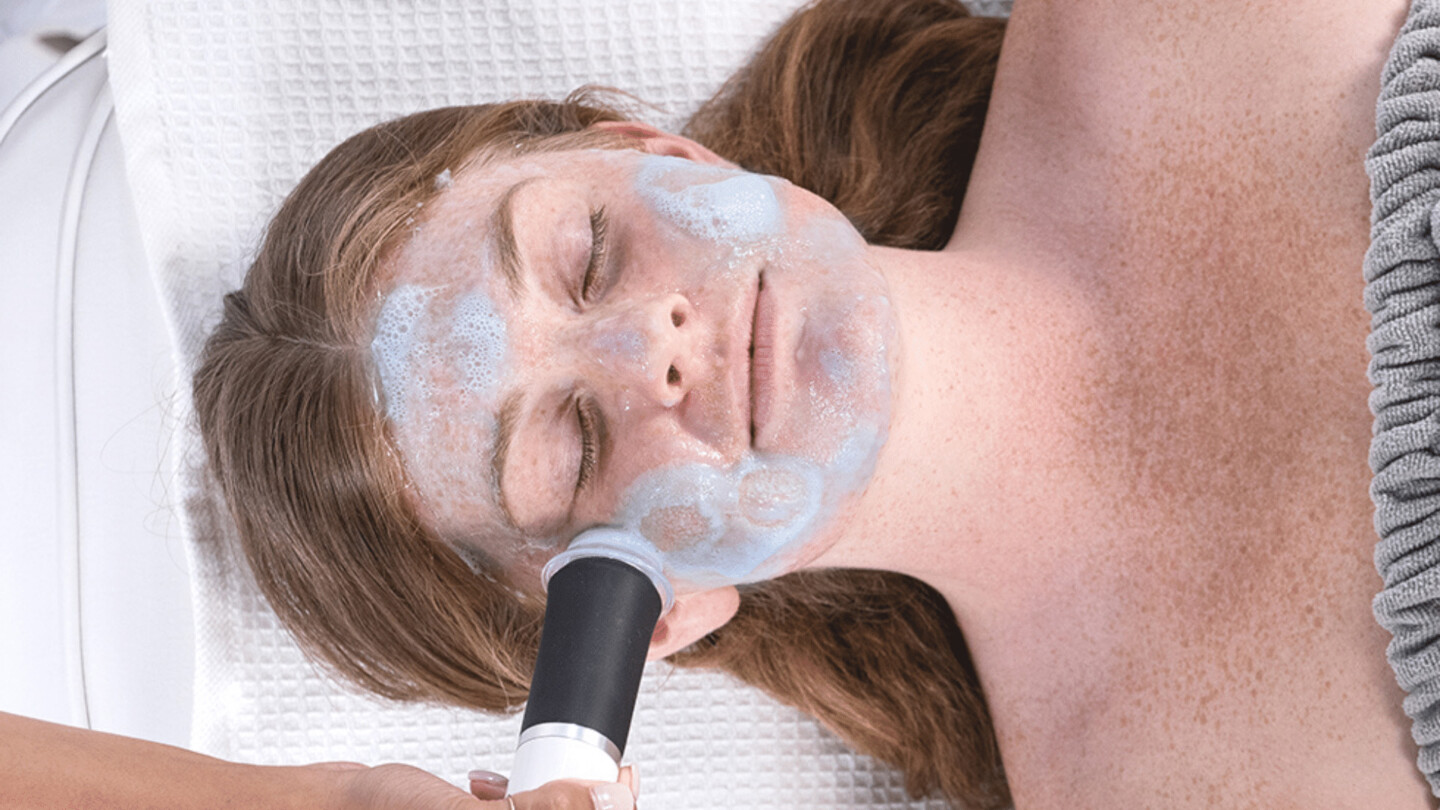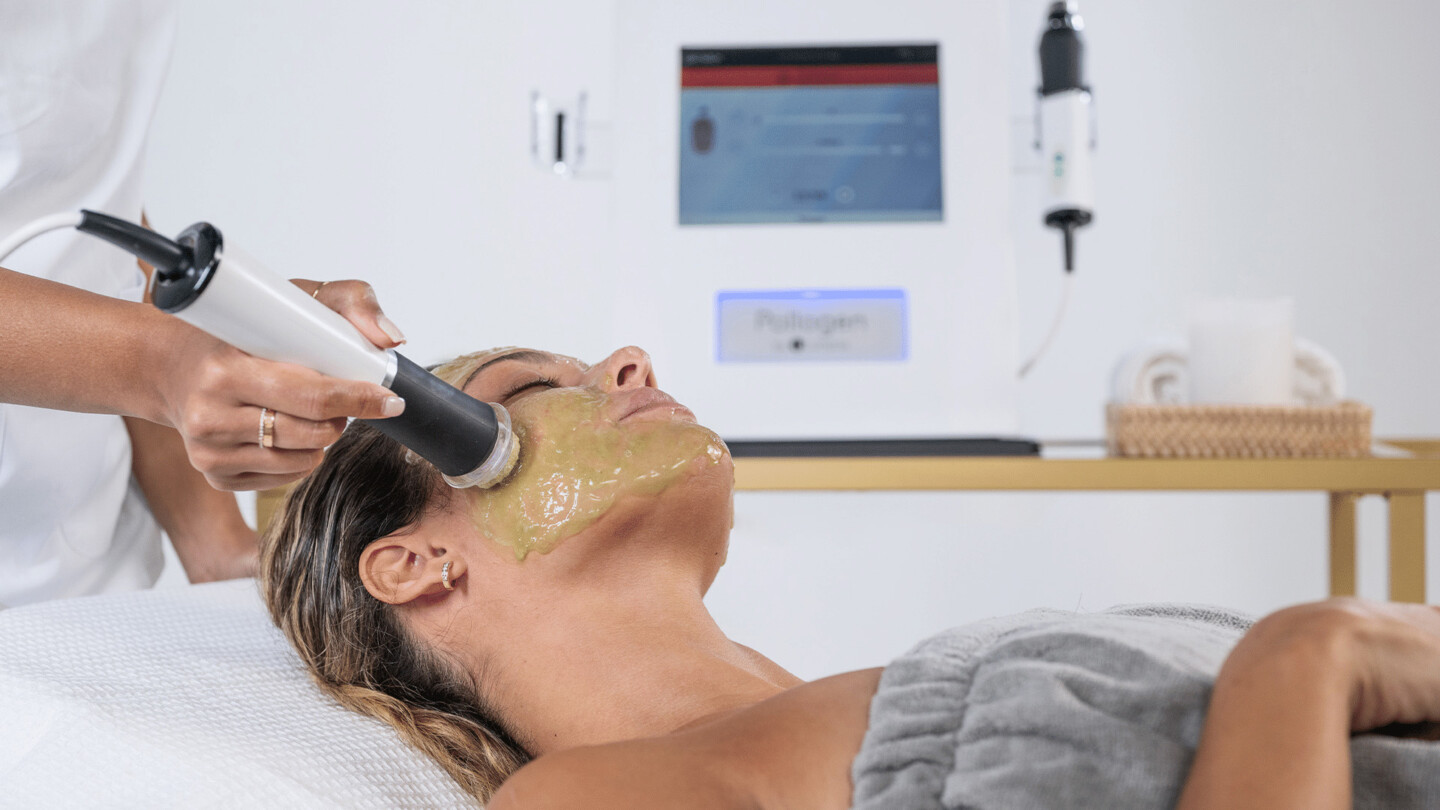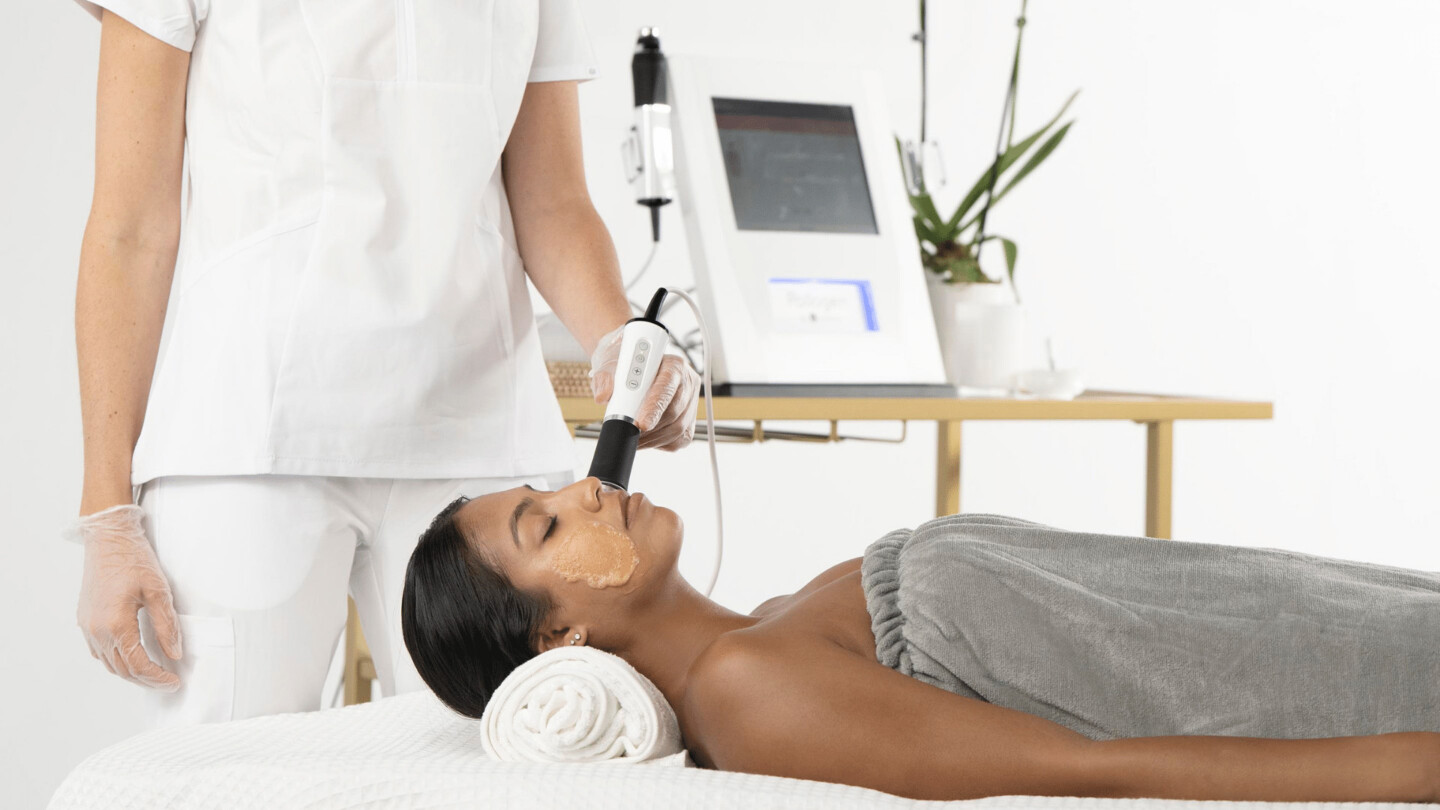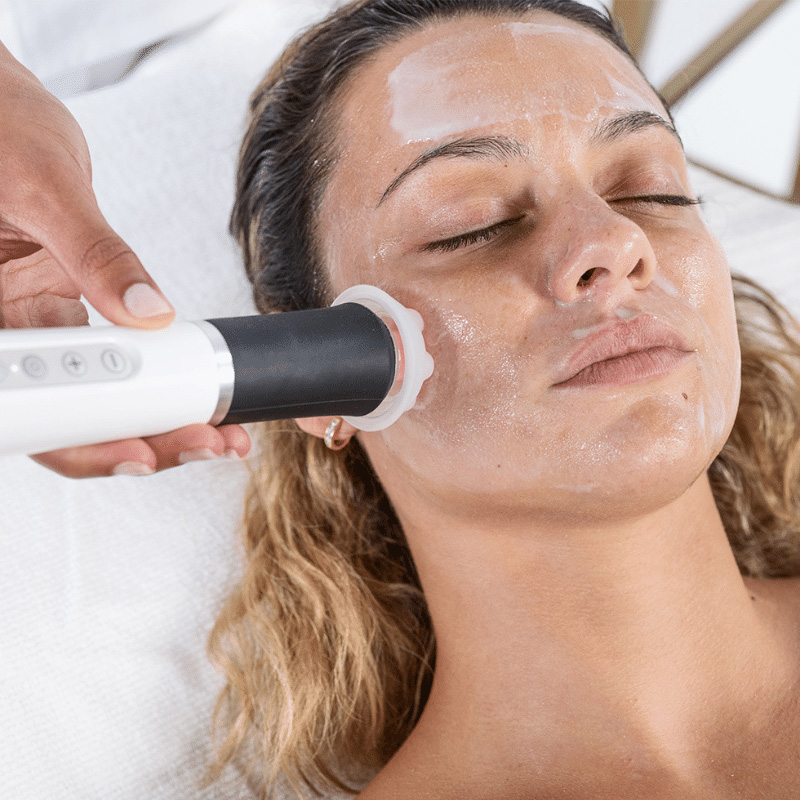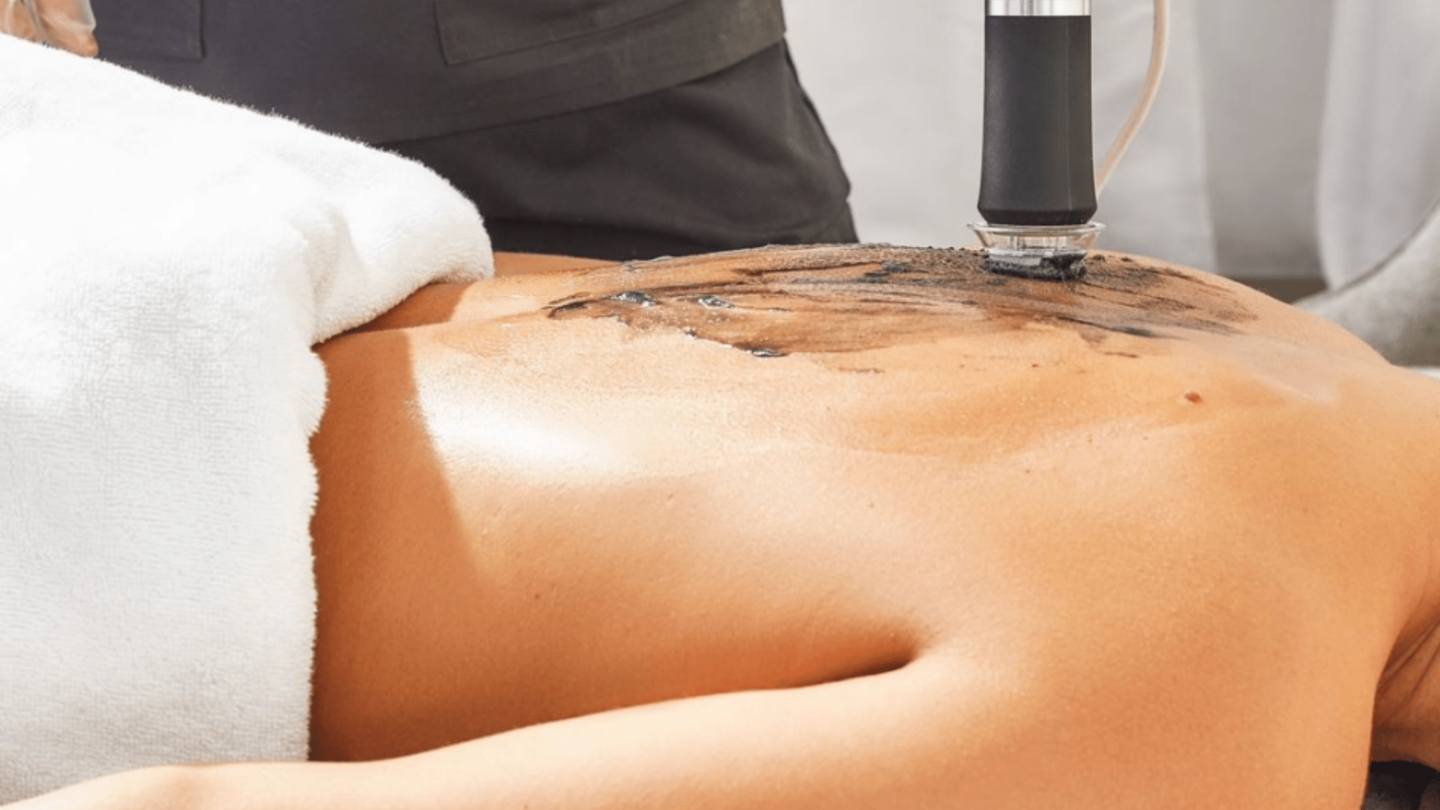Understanding Antioxidants for Skin
Antioxidants are compounds that can protect your body and skin from damage caused by free radicals. Free radicals are unstable molecules created by environmental stressors, such as UV radiation, pollution, and smoking. Free radicals can cause oxidative damage to your DNA, which can lead to signs of aging, psoriasis, and even disease. Antioxidants neutralize free radicals so they can’t damage cells.
Antioxidants are popular in skincare products because they have many benefits for the skin. By fighting free radicals, antioxidants in skincare help reduce the appearance of fine lines and wrinkles while also improving your skin’s hydration, promoting collagen production, and supporting cell regeneration.
We'll teach you about common skincare antioxidants and how to incorporate them into your routine to get healthy, beautiful skin.
What Are Antioxidants?
The term “antioxidant” covers a variety of substances that can stabilize free radicals, preventing them from causing damage to your cells.
What Do Antioxidants Do for Skin?
There are two ways to use antioxidants, internally or topically, and they offer different benefits. Applying skincare products that contain antioxidant ingredients is the fastest way to improve the look and feel of your skin. You can expect a brighter skin tone, increased hydration, and protection against signs of aging.
Taking antioxidants internally, through supplements or your diet, provides benefits for your entire body, including reduced inflammation, improved circulation, faster cell regeneration, and protection against environmental stressors. By combining topical and internal antioxidants, you'll be helping your skin and body look and feel its best.
Although antioxidants are photoprotective, meaning they help fight sun damage, they are not a replacement for sunscreen. Always use SPF 30+ as your first line of protection against the sun.
The Best Antioxidants for Skin
Antioxidants help reduce the negative effects of oxidative stress, such as wrinkles, sagging skin, and hyperpigmentation. Below are some of the best antioxidants for the skin that you can find in skincare products on any beauty aisle.
Vitamin C
Vitamin C is a powerful antioxidant that works wonders on the skin. It stimulates collagen production to keep skin firm and supple, protects against environmental pollution and sun damage, and brightens the skin.
To get the most out of this antioxidant, apply it in the morning so it can fend off UV damage throughout the day. Though vitamin C can minimize sun damage, it’s still essential to wear SPF 30+ daily.
Retinol (Vitamin A)
Retinol, also known as vitamin A, is an excellent skincare antioxidant, especially for mature skin. Retinol can:
- Boost cell turnover to reduce dead skin cell buildup that causes a dull, rough complexion
- Stimulate collagen production, keeping skin smooth and supple
Retinol is a powerful antioxidant that can cause skin irritation in some people. To help your skin adjust, choose a product with a low concentration (.01-.03%) to start and gradually increase to higher concentrations once your skin stops showing signs of sensitivity.
Niacinamide
Niacinamide promotes ceramide production, a lipid that protects the skin barrier and retains moisture. Using skincare products with this antioxidant can improve your skin's hydration and suppleness while reducing the appearance of fine lines and wrinkles.
Niacinamide is a great antioxidant for all skin types, but it's especially beneficial for those with sensitive, oily, or acne-prone skin. Its anti-inflammatory properties can reduce redness and irritation and regulate oil production, which can help control greasy skin and acne.
CoQ10 (Coenzyme Q10)
CoQ10 is a naturally occurring enzyme found in every cell of the body. It plays an essential role in boosting energy within the cells, which helps speed cell turnover. This leads to faster skin rejuvenation and can reduce the look of fine lines and wrinkles. It’s also an excellent antioxidant for protecting the skin against UV radiation and environmental pollution.
Vitamin E
Vitamin E helps strengthen the skin barrier to improve moisture retention and protects the skin from oxidative stress that can dull the complexion and speed up the aging process. It also has anti-inflammatory properties, making it a great skincare ingredient for people with sensitive skin or conditions such as psoriasis and eczema.
Copper
Copper is an essential trace mineral that helps your body produce collagen and elastin, both of which help maintain your skin’s elasticity and firmness for a more youthful appearance. Copper also fights oxidative stress that can lead to signs of aging, and its anti-inflammatory properties reduce redness and irritation in the skin.
Key Antioxidant Ingredients in Glo2Facial Customizations
Glo2Facial uses antioxidant ingredients to provide immediate and long-lasting results. Each customization features a unique antioxidant that targets specific skin concerns. Read on to learn more about the highly effective ingredients in each Glo2Facial customization.
Balance Customization
The Balance Customization has antibacterial, antimicrobial, antiviral, and antifungal properties, making it an excellent choice for oily and acne-prone skin. It features camu-camu extract, which delivers a boost of vitamins and antioxidants to your skin to help prevent UVA and UVB damage while reducing pigmentation caused by acne.

This customization also has many other powerful ingredients, including:
- Bamboo Charcoal: Absorbs dirt, oil, and pollutants to clarify and remove acne-causing agents.
- Mandelic Acid: Loosens the bonds of dead skin cells to gently exfoliate, even skin tone, and reduce pigmentation.
- Willow Bark: A natural form of salicylic acid used to shed dead skin cells, decrease redness and inflammation, and treat acne.
- Kojic Acid: Contains skin-lightening and antimicrobial properties to reduce sun spot damage and pigmentation caused by acne.
- Horsetail Extract: Provides anti-aging and anti-inflammatory antioxidants to soothe acne and irritation.
- Vanilla: Contains antibacterial, anti-inflammatory, and antioxidant properties to slow down signs of aging such as fine lines, wrinkles, and age spots.
- Jojoba oil: Reduces inflammation while moisturizing and nourishing the skin.
- Argan oil: Packed with omega fatty acids, vitamin R, and linoleic acids that moisturize, soften dry patches, and reduce inflammation.
- Shea butter: Contains high concentrations of fatty acids and vitamins to soften the skin and provide anti-inflammatory and healing properties.
Detox Customization
The Detox Customization is best for irritated skin and skin regularly exposed to environmental factors such as pollution and allergens. Green tea extract is the star ingredient in this customization, using its anti-inflammatory and antimicrobial properties to help repair UV damage and photo-toxicity.

This customization also features:
- Copper Gluconate: A powerful antioxidant that helps inhibit damage from environmental stressors while stimulating collagen synthesis and skin regeneration.
- Marula Oil: Fight free radicals and staves off skin damage caused by UV rays and pollution.
- Citric Acid: Promotes new skin growth and helps prevent the build-up of dead cells which can dull the complexion.
- Calamine: A conditioning agent that helps relieve irritation in red or sensitive skin.
- Allantoin: A natural compound that improves skin's moisture retention.
- Gorgonian Extract: Reduces and protects from irritation, soothes the skin, and staves off signs of aging.
- White Water Lily Extract: A smoothing and moisturizing ingredient that helps balance cell renewal and eliminate toxins, revealing a brighter, more even skin tone.
- Vitamin E: Supports the immune system, cell function, and overall skin health to combat the effects of free radicals.
- Horsetail Extract: Provides anti-aging and anti-inflammatory antioxidants to soothe acne and irritation.
- Vanilla Extract: Contains antioxidants that slow down signs of aging like fine lines, wrinkles, and age spots.
- Argan Oil: Loaded with vitamin E and fatty acids that help hydrate and soften the skin.
- Shea Butter: A skin moisturizing agent.
- Jojoba Oil: Nourishes and protects the skin from environmental stressors
Glam Customization
The Glo2Facial Glam Customization supports the skin barrier to reduce collagen and moisture loss. It uses copper, a potent antioxidant, to improve collagen synthesis, reduce the appearance of scars and pigmentation, soften fine lines, and protect the skin from environmental stressors.

This customization also features these ingredients:
- Gold Flakes: Increases skin elasticity and helps prevent loss of collagen to visibly plump, lift and firm the skin.
- Silk Amino Acids: Strengthens the skin barrier, moisturizes, and speeds up cell function to help visibly reduce signs of aging.
- Rosehip Oil: Contains a wealth of essential fatty acids, which help keep skin cell walls strong, maintain moisture, enhance collagen regeneration, firm the skin, even skin tone, and fade scars.
- Marula Oil: Contains antioxidants, amino acids, and essential fatty acids to hydrate the skin, smooth fine lines, and fight free radicals.
- Grapeseed Oil: Contains antimicrobial properties to repair the skin's protective barrier and treat acne.
Hydrate Customization
The Hydrate Customization is best for dry, dull skin. It uses niacinamide, a potent antioxidant, to strengthen the skin barrier and enhance moisture retention for long-lasting results. It also promotes protein synthesis, improves skin metabolism, and visibly reduces the appearance of enlarged pores.
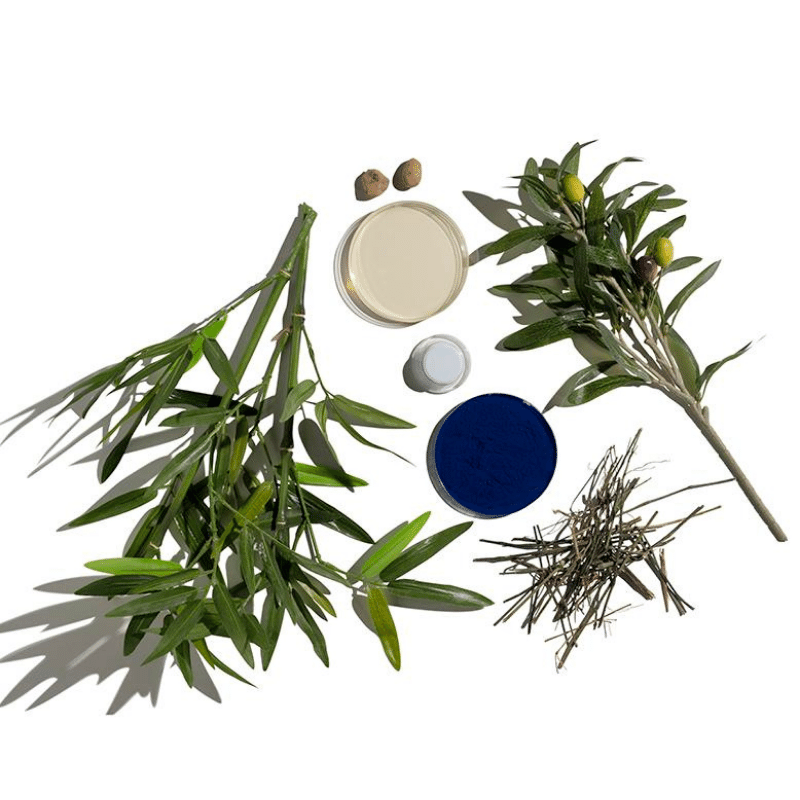
You’ll also find these skin-boosting ingredients in our Hydrate Customization:
- Blue Spirulina: Improves moisture retention and contains antioxidants.
- PHA, Lactobionic Acid: The next generation of AHAs. It gently exfoliates and enhances hydration and firmness.
- Hyaluronic Acid: Can attract and hold 1000x its weight in moisture. Replenishes moisture and hydration.
- Vitamin B5: A conditioning agent that improves moisture retention and stabilizes the skin's barrier function.
- Argan Oil: Packed with omega fatty acids, vitamin R, and linoleic acids, which moisturize, softens dry patches, and reduces inflammation.
Illuminate Customization
The aptly named Illuminate Customization is the best choice to brighten skin. Vitamin C is the all-star antioxidant in this customization, and it reduces hyperpigmentation, protects the skin from sun damage, and creates brighter complexion.
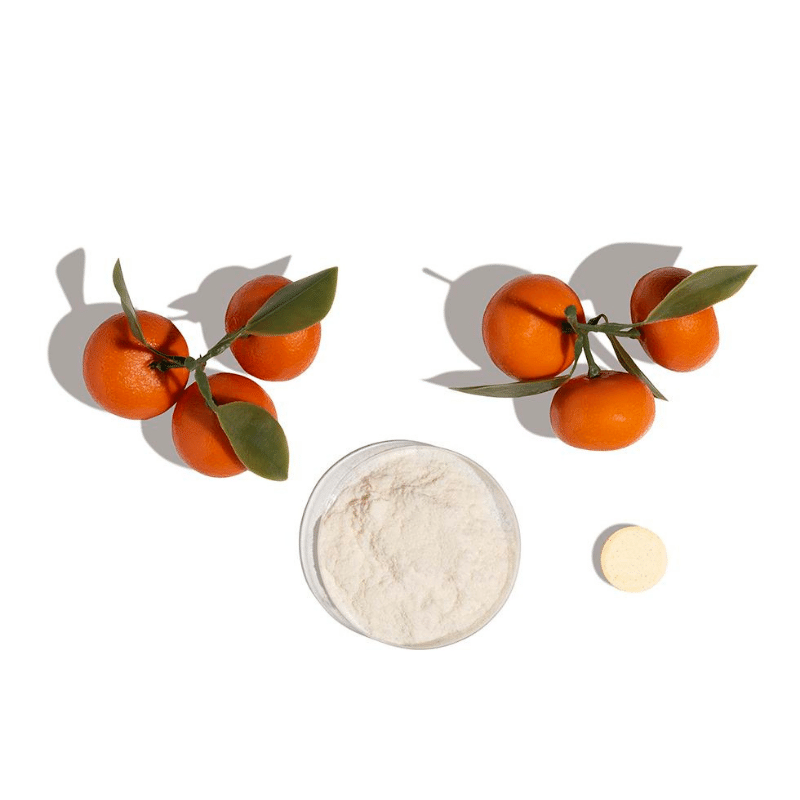
This customization also features:
- Kojic Acid: Fades dark spots and evens skin tone.
- Carrot Extract: Repairs skin cells and plumps skin texture.
- Prickly Pear Extract: Brightens dark spots and hyperpigmentation.
- Boldo Tree Bark: Contains antioxidant, anti-inflammatory, and brightening properties.
- Coconut Oil: Moisturizes, reduces inflammation, and fights acne.
- Shea Butter: Contains high concentrations of fatty acids and vitamins to soften the skin and provide anti-inflammatory and healing properties.
Revive Customization
To refresh dull skin, reduce fine lines, and improve overall skin texture, choose the Revive Customization. It uses retinyl palmitate, a mild form of retinol, to even skin tone and reduce signs of sun damage that appear with age.
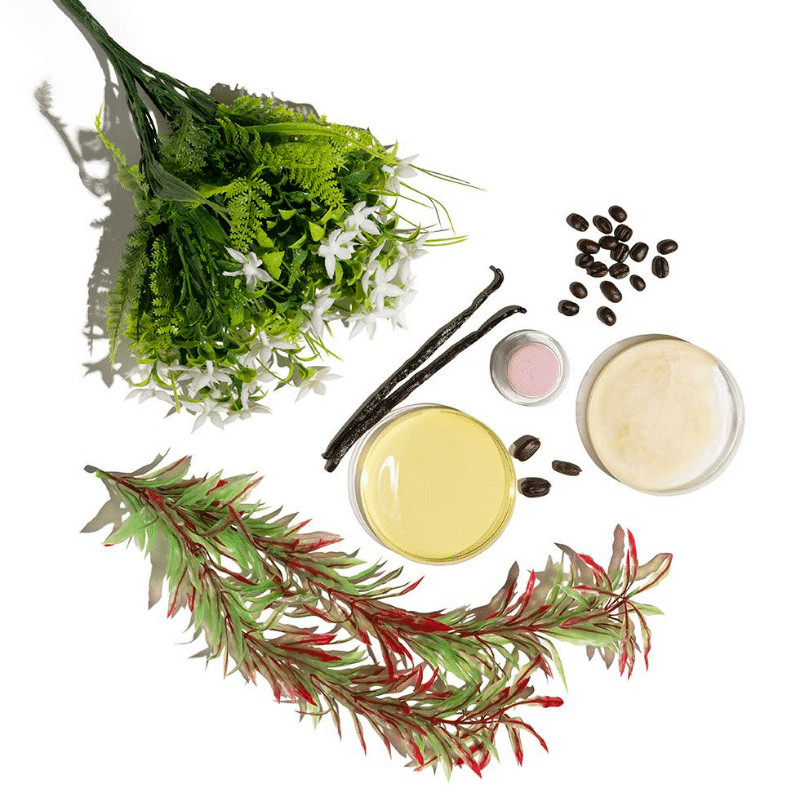
You’ll also find these powerful ingredients in this customization:
- Red Algae: Contains anti-aging properties to inhibit enzymes that break down collagen in the skin, improve elasticity and reduce the appearance of fine lines.
- Caffeic Acid: Increases collagen production and prevents premature aging.
- Ferulic Acid: Strengths the skin barrier, smooths texture, and reduces the appearance of fine lines and wrinkles.
- Willow Bark: A natural form of salicylic acid used to shed dead skin cells, decrease redness and inflammation, and treat acne.
- Edelweiss: Improves firmness and hydration for more supple skin.
- Vanilla: Contains antibacterial, anti-inflammatory, and antioxidant properties to help to slow down signs of aging like fine lines, wrinkles, and age spots.
- Shea Butter: Contains high concentrations of fatty acids and vitamins to soften the skin and provide anti-inflammatory and healing properties.
Tips for Using Antioxidant Skincare At Home
Get the most out of your antioxidant skincare by following these tips:
1. Antioxidants are powerful ingredients, so it’s a good idea to do a patch test to see how your skin reacts. You may need to slowly introduce antioxidant skincare into your routine, either by starting with lower concentrations or by gradually increasing the frequency of use.
2. Apply your antioxidant serum or treatment after cleansing and toning, but before moisturizing and applying sunscreen.
3. Antioxidants are known for protecting against sun damage, but it’s still essential to wear sunscreen with SPF 30+ every day.
4. Identify your specific skincare concerns and choose the right antioxidants to target those issues. For example, if you want to brighten your skin, choose vitamin C. To improve hydration, look for vitamin E.
Get Healthy, Glowing Skin with Antioxidant Ingredients in Glo2Facial Treatments
A Glo2Facial treatment is just what your skin needs to look and feel its best. Find a provider near you and book a customized, antioxidant-rich facial that meets all of your skincare needs.

Guide to Sustainable Skincare
As our awareness of our ecological footprint grows, it is becoming increasingly important to consumers to make conscious choices that promote sustainability. Sustainable skincare is all about minimizing the environmental impact of the products we use by considering the full life cycle of the products, from their ingredients and manufacturing process to packaging and disposal.
This guide to sustainable skincare will explore how to make your skincare routine more eco-friendly. We'll cover the importance of choosing products with natural ingredients, reducing waste through packaging choices, and supporting ethical and environmentally responsible companies.
What Does “Sustainable” Really Mean?
Sustainability means meeting the needs of the present without destroying resources for future generations. Creating a sustainable skincare routine involves choosing products with ethically sourced ingredients, low- or zero-waste packaging, and eco-friendly manufacturing processes.
While terms like natural, organic, clean, green, zero-waste, and eco-friendly are related to sustainability, they do not necessarily mean the same thing.
- Natural refers to ingredients that are sourced from plants or other natural sources.
- Organic refers to natural ingredients grown without the use of synthetic chemicals.
- Clean refers to products that are free from toxic ingredients.
- Green products are those made with environmentally friendly practices.
- Zero-waste products do not generate any waste in their production or use.
- Eco-friendly refers to products that are designed to have a minimal impact on the environment.
These terms are important in their own right, but they don't guarantee that a product is sustainable. Sustainable skincare involves a holistic approach that considers not only the ingredients and manufacturing processes but also the social and environmental impacts of the product.
Greenwashing in the Skincare and Beauty Industries
Greenwashing is a deceptive marketing tactic some companies use to make their products seem environmentally friendly or sustainable, without actually taking significant steps to reduce their environmental impact.
Today, more shoppers than ever before want to make eco-conscious purchases, but greenwashing has left them uncertain about what brands really mean when they claim to be environmentally friendly. Nearly 80% of beauty consumers question whether brands are truthful about their sustainability claims, and a lack of transparent information prevents them from adopting a more sustainable lifestyle.
Greenwashing is also bad for business. Just ask Kim Kardashian and her beauty brand SKKN. It may initially boost sales, but as consumers become more savvy about sustainability, they're able to see through this commercially-driven tactic. Companies that greenwash their products will eventually be discovered and lose their customers' trust. It's better to be transparent about your practices and how you plan to improve them over time.
How to Make Your Skincare Routine More Sustainable
Here are easy changes you can make to your current skincare routine to make it more sustainable.
Use Products With Sustainable Ingredients
To clean up your skincare routine, look for ingredients known to be harvested unsustainably or directly harmful to the environment. Here are some common ingredients to avoid when shopping for sustainable skincare products:
- Microbeads are tiny plastic beads commonly found in exfoliating products. They're too small to be filtered out at water treatment plants and end up in the water system, where they can harm marine life.
- Palm oil production often involves the destruction of rainforests and the displacement of local communities.
- Synthetic fragrances are usually made with harmful chemicals that wash off into the water system, harming aquatic life and disrupting ecosystems.
- Oxybenzone is a common ingredient in chemical sunscreens. It's toxic to coral and is largely responsible for the decline of coral reefs.
- BHA and BHT are popular preservatives in skincare and makeup products. These cause bioaccumulation in aquatic life, leading to mutations and death.
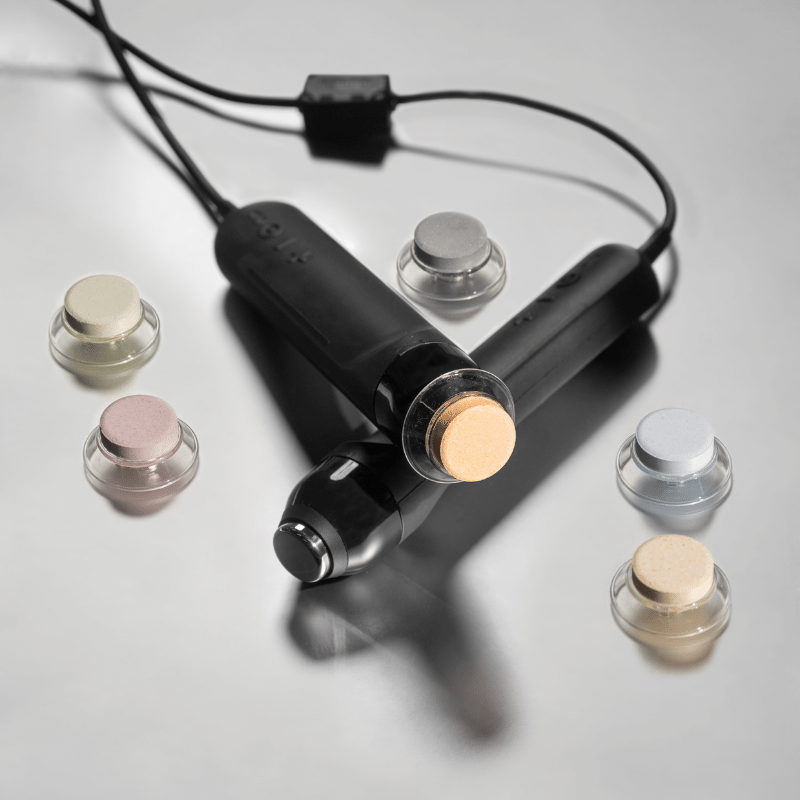
Reduce Your Water Use
Climate change has led to serious concerns about water consumption. Considering that only about 1% of the water on earth is drinkable, we really can't afford to waste it. Traditional beauty products are guilty of high water consumption, with many formulations ranging from 60% to 95% water.
Thankfully, there are eco-conscious beauty brands out there like LOLI and Lush that are creating products that use little to no water. You can be a more water-conscious shopper by seeking out these types of brands and checking your beauty products to see if they contain water.
Here are some other ways you can cultivate a more water-friendly lifestyle:
- Introduce more plant-based meals into your diet, which requires about half of the water a meat-heavy diet does. You'll contribute to a more water-conscious lifestyle while providing more opportunities to eat skin-boosting greens, vegetables, and fruits.
- Turn off the faucet while you wash your face. You can save a significant amount of water over time by only turning the water on when you need it.
- Aim for 5-10 minute showers. This will save water, and it also helps keep your skin hydrated. You may not realize it, but during a long, hot shower, your body sweats and your skin loses moisture.
- Use a bucket to collect the shower or bath water that would otherwise be wasted as you wait for it to warm up. You can use it to water your houseplants or even flush the toilet.
Avoid Disposable, Single-Use Products When Possible
An easy way to create a more sustainable beauty routine is to cut out as many disposable, single-use products as possible, such as face wipes, cotton rounds, and razors. Choose more sustainable options, such as washcloths, makeup eraser cloths, reusable cotton rounds, and even laser hair removal.
Recycle or Reuse Containers
Reusing beauty product containers is another easy change to create a more sustainable lifestyle. Be sure to use as much of the product as possible before cleaning out the container for reuse. Get creative with your upcycling. Consider beauty containers for plant propagation, storage of small items, or even crafts.
Reduce Product Use with Professional Treatments
You can also reduce your skincare product use by opting for regular professional treatments.
Skincare professionals have access to more effective ingredients and cutting-edge technologies that ensure you get excellent, long-lasting results. They also provide personalized treatments tailored to your specific skin concerns, allowing for more efficient use of products and resources and more effective, long-lasting results. You’ll be able to maintain healthy, beautiful skin with just a few high-quality products at home.
Get Healthy, Glowing Skin Sustainably With a Glo2Facial Treatment
Be kind to your skin and the planet. Look for products that use natural, biodegradable ingredients, and choose companies that prioritize sustainability and environmental responsibility.
Glo2Facial can help you on your journey to more sustainable skincare. We provide treatment customizations using all-natural ingredients to ensure you get healthy glowing skin, no matter your age, gender, or skin type. Find a Glo2Facial provider near you and book a personalized treatment today.
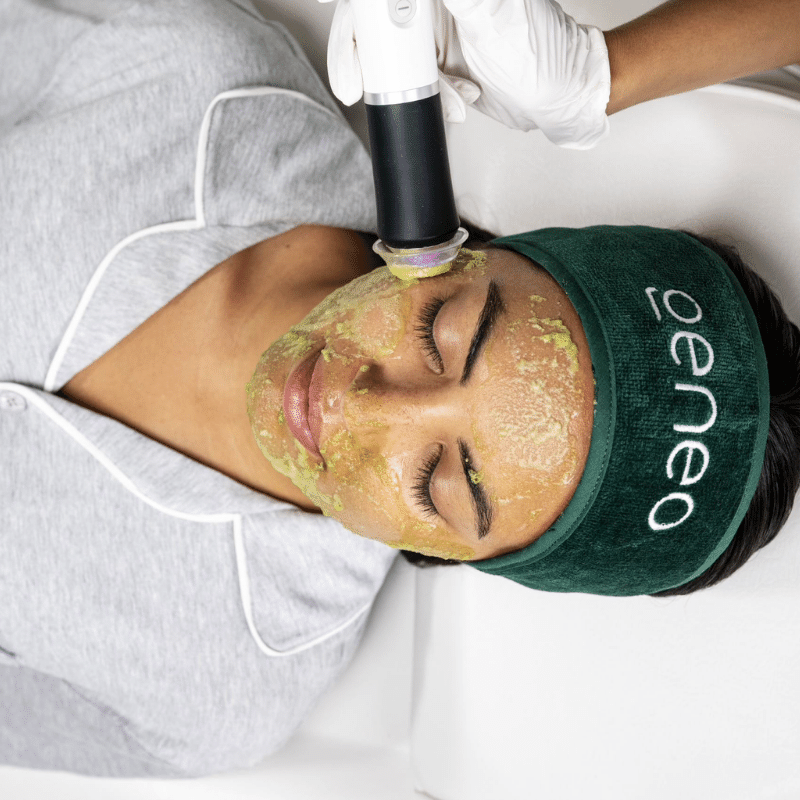
Caring for Sensitive Skin: Treatments + Routines
Anyone who treats sensitive skin, either personally or professionally, knows it requires patience and a gentle hand. There are many reasons why skin sensitivity occurs, but these are some of the most common causes:
- Genetic predisposition to a thinner skin barrier
- Overuse of powerful skincare products such as retinol or exfoliants
- Too much sun exposure
- Side effect of medication
Regardless of the cause, the outcome is the same: skin that’s prone to itchiness, redness, breakouts, stinging, or dryness. The best way to combat sensitive skin is with a dedicated at-home routine and regular professional facial treatments. This guide will help you find the best skincare products and treatments that won’t cause irritation or damage.
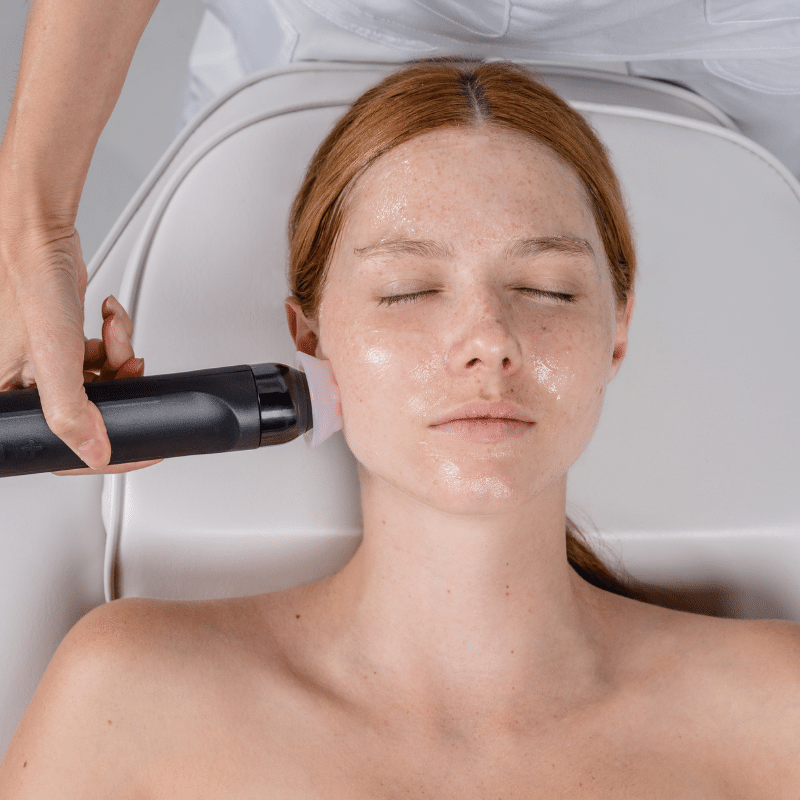
Skincare for Sensitive Skin
Skincare for sensitive skin should be focused on gentle, high-quality ingredients and treatments.
This applies to facial products such as cleansers, moisturizers, and makeup, as well as hair products, soaps, and body lotions since sensitive skin can also affect the body.
While it may not be possible to make skin less sensitive, it is possible to improve your skincare routine to eliminate irritation and inflammation caused by certain ingredients, dryness, or excessive exfoliation.
Sensitive Skin Routine
Establishing a high-quality skincare routine is essential for sensitive skin. It protects the skin barrier and helps prevent irritation caused by harsh ingredients, aggressive exfoliation, or endlessly switching to new products. The tips below will help you find the right products and treatments to create a skincare routine that soothes and supports sensitive skin.
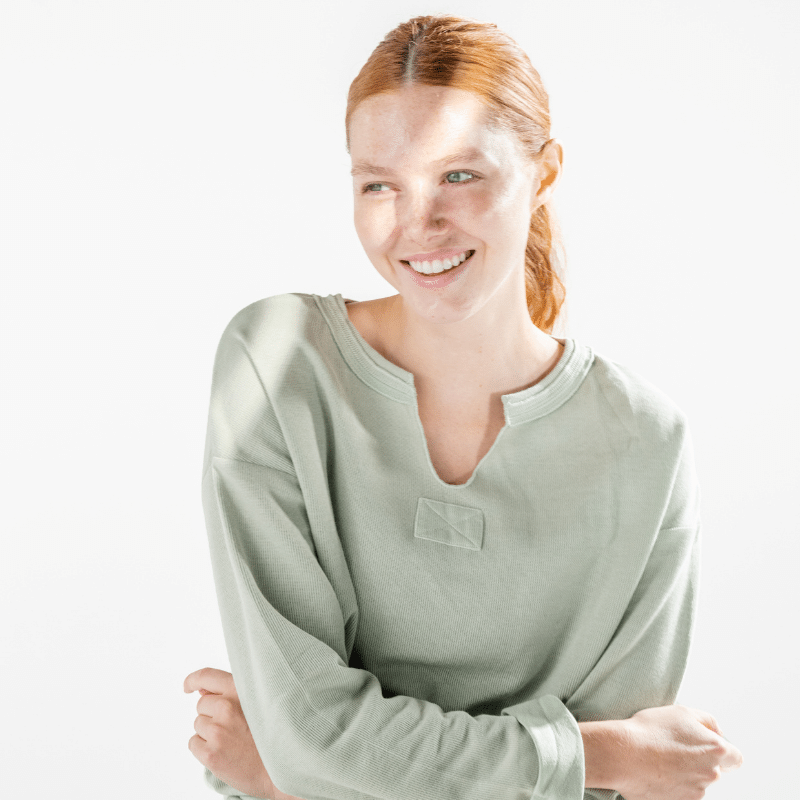
Cleanser for Sensitive Skin
Cleansers for sensitive skin can be a tricky area. It’s important to remove makeup, sunscreen, pollution, and skincare products every night, but many face washes contain harsh ingredients that can leave sensitive skin irritated and painful.
When searching for the right cleanser, avoid products with fragrances, alcohols, physical exfoliants, and sulfates, as these are all common culprits in sensitive skin flare-ups. Instead, look for a product with limited ingredients focused on skin-calming options such as hyaluronic acid, green tea extract, colloidal oatmeal, and calamine. Reach for cleansers labeled “gentle” or “for sensitive skin.”
You can also try a face-cleansing product like a Makeup Eraser, a soft cloth that can remove dirt and makeup using only water. Whichever product you choose, avoid aggressively scrubbing the skin. Use gentle ingredients and a light touch to cleanse sensitive skin carefully.
Toner for Sensitive Skin
Toner helps remove any dirt or impurities left behind by your cleanser which could irritate sensitive skin. You can use toner twice a day after washing your face and before applying moisturizers or treatments. The most important thing to look for when choosing a toner is that it’s alcohol-free. Alcohol can be drying and is likely to irritate sensitive skin.
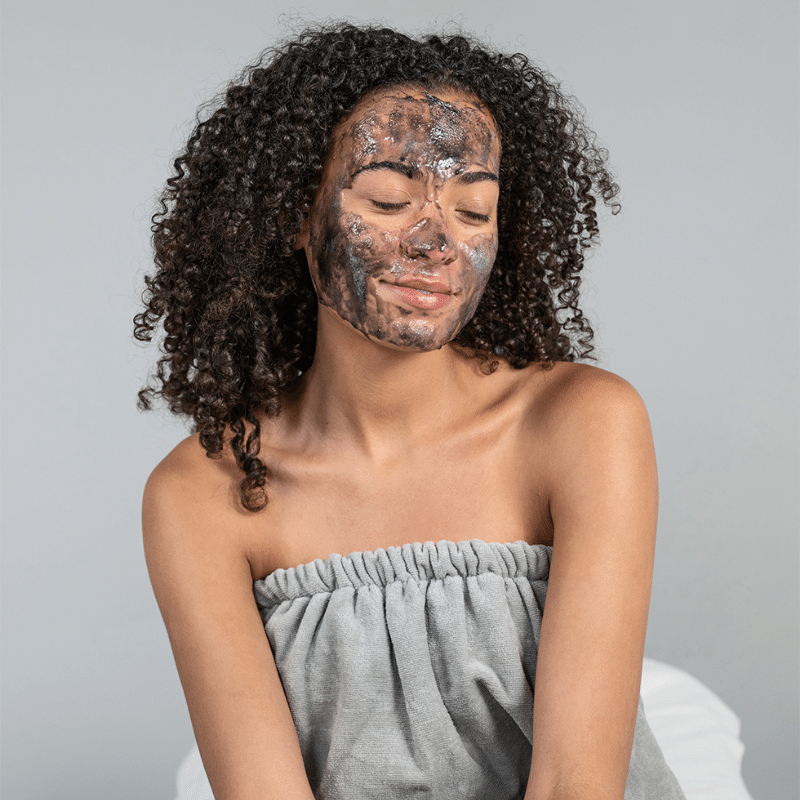
Treatments for Sensitive Skin Concerns
You can use targeted, at-home treatments for common sensitive skin concerns such as redness, irritation, and dryness. Here are a few options to try:
- An oatmeal bath for itchy skin
- Aloe vera gel for red, irritated patches on the face or body
- Hydrocortisone cream to combat skin inflammation on the body
- Hydrating masks to moisturize skin and eliminate tightness
- Moisturizing treatments containing ceramides, which support the skin barrier
- Skin supplements featuring vitamin D, probiotics, fish oil, or methyl-sulfonyl-methane (organic sulfur), which are known to support skin health
As you explore different treatments to find what works best, be sure to give your skin time to adjust to one new product at a time. Two to four weeks is a good timeframe. Trying too many products too quickly can cause more irritation, in addition to making it difficult to pinpoint which treatment caused an issue or worked well.

Moisturizer for Sensitive Skin
A daily moisturizer is key for sensitive skin, even if you also struggle with oiliness. Keeping skin moisturized keeps the skin barrier strong, reducing the chance of damage and irritation. If you cleanse and exfoliate sensitive skin without moisturizing, it can become overly dry, produce excess oil, or become irritated and inflamed. It’s also important to remember that all of your skin needs moisturizer, not only your face.
Look for a facial moisturizer labeled “noncomedogenic,” which means it won’t clog pores (especially important for acne-prone sensitive skin). Avoid fragrances and sulfates. Hyaluronic acid and ceramides are excellent ingredients to look for in a sensitive-skin moisturizer. They work together to plump the skin and seal the skin barrier to retain moisturizer.
Sunscreen for Sensitive Skin
Many people with sensitive skin avoid sunscreen because many sunscreen ingredients can be irritating, but sun protection is still a vital part of any skincare routine. Sun damage exacerbates sensitive skin issues, so it’s better to look for a high-quality sunscreen that is gentle on the skin rather than skip it.
Look for sunscreen that is labeled noncomedogenic and safe for sensitive skin. Also, check for zinc as an active ingredient. Zinc is a physical sunblock rather than a chemical one, and it can help soothe skin. Make sure to use at least SPF 30 or higher.

Tips for Sensitive Skin Care
In addition to establishing a skincare routine using high-quality products, you can also care for sensitive skin by following these tips:
- Avoid ingredients that could irritate your skin, such as alcohols, fragrances, and dyes
- Limit exfoliation to no more than twice a week
- Keep your skin hydrated from the inside out by drinking plenty of water
- Always cleanse skin after exercising or sweating to prevent breakouts and irritation (face and body)
- Use high-quality, limited-ingredient products for your skin and hair to reduce the chance of skin irritation
- Wash and condition your hair, and then wash your body to ensure no hair product residue remains
- Use lukewarm water to wash your face and limit or avoid very hot baths and showers, which can sap moisture from the skin
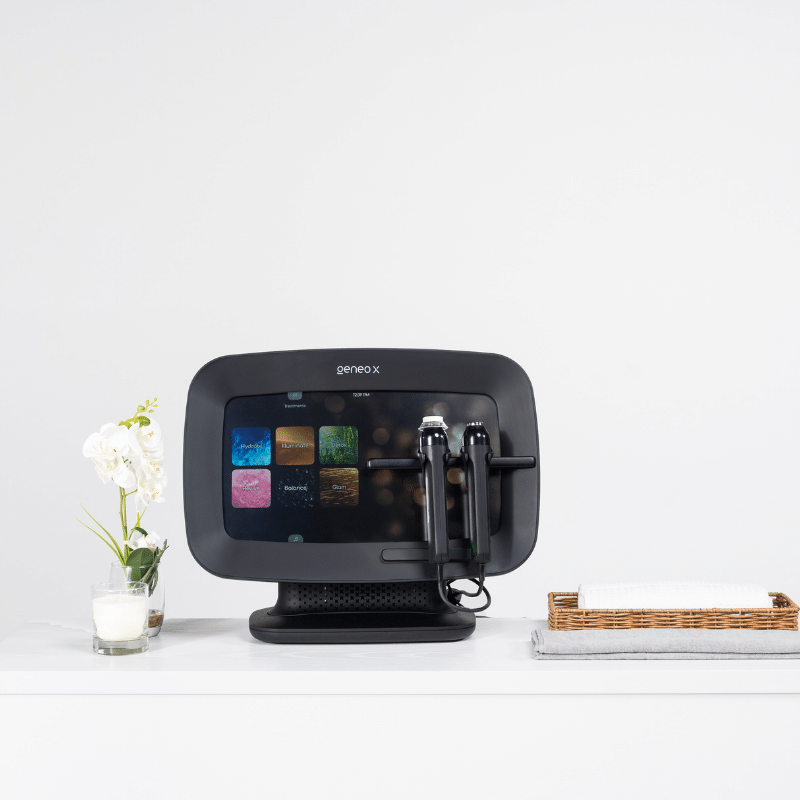
The Best Facial for Sensitive Skin
Professional facial treatments can make a dramatic difference in sensitive skin care. The best facials can calm irritation and inflammation with advanced skincare techniques and ingredients, such as ultrasound and oxygenation technology, which aren’t readily available for at-home use.
Regular professional facial and body treatments can help rebuild the skin barrier and activate natural processes within the body (e.g., collagen production and faster cell renewal) that will protect the skin from the inside out. They’re especially beneficial for people who also struggle with dryness or oiliness because professional treatments can help balance these skin types.
Some standard facials can help sensitive skin, but you risk harsh ingredients and inconsistent results. Glo2Facial soothes and strengthens sensitive skin using natural ingredients and advanced technology. It provides fantastic, long-lasting results with no downtime. Whether you’re looking for the best facial to treat your sensitive skin or need the perfect solution for clients with sensitive skin, Glo2Facial fits the bill.
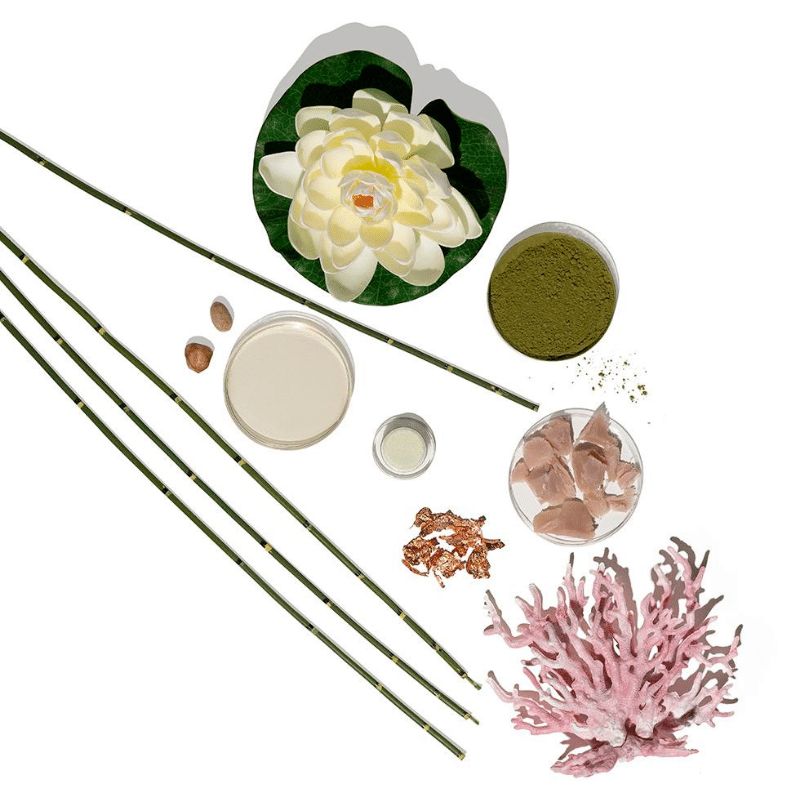
Glo2Facial Detox for Sensitive Skin
Glo2Facial Detox is the best solution for sensitive skin. It calms irritated skin and uses antioxidant-rich ingredients to fight environmental stressors, such as pollution and allergens, that contribute to damage and inflammation. It also boosts cellular renewal, which smooths and brightens skin from the inside out for long-lasting results.
During this facial, the customization pod, which is filled with all-natural ingredients, reacts with our Primer Gel to gently exfoliate the skin and create a bubbly, CO2-rich environment on the skin’s surface. The body responds by sending a surge of oxygen to the skin, creating ideal conditions to nourish and transform the skin.
The Detox customization uses highly effective natural ingredients without being harsh on sensitive skin. These ingredients are infused into newly oxygenated and exfoliated skin with ultrasound and massage technologies for deep healing and rejuvenation. The facial includes:
- Green Tea Extract - Contains anti-inflammatory and anti-microbial properties to repair UV damage and photo-toxicity
- Copper Gluconate - Helps inhibit damage from environmental stressors while stimulating collagen synthesis and skin cell regeneration
- Marula Oil - Helps fight free radicals and assists in staving off skin damage caused by UV rays and pollution
- Calamine - A conditioning agent that relieves irritation in red or sensitive skin
- Gorgonian Extract - Soothes irritation and assists in reducing signs of aging
- White Water Lily Extract - A smoothing and moisturizing ingredient that helps balance cell renewal and eliminates toxins to reveal a brighter, more even skin tone
- Horsetail Extract - Contains antioxidants and anti-inflammatory properties to reduce acne and soothe irritation
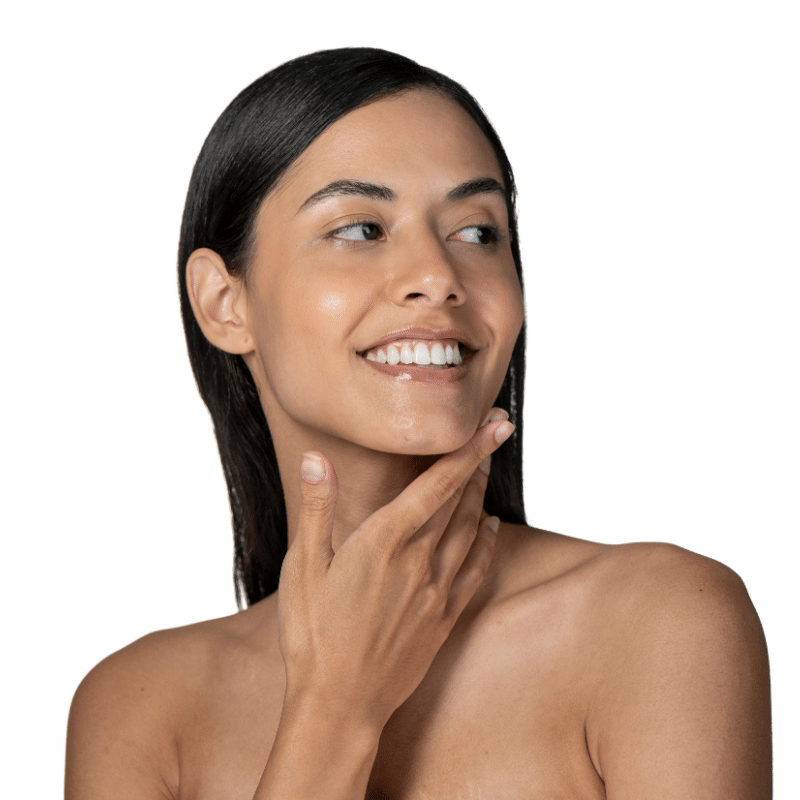
Caring for Sensitive Skin FAQ
We’ve got answers to your most common sensitive skin questions.
What should I avoid if I have sensitive skin?
Avoid products with long ingredient lists and those that include fragrances, sulfates, alcohol, and dyes.
Why is my skin so sensitive?
Sensitive skin can be caused by a variety of factors, including a genetic predisposition for a thin skin barrier, sun or wind damage, exposure to pollution or allergens, and using products with harsh ingredients or physical exfoliants.
What is the best facial treatment for sensitive skin?
The best facial for sensitive skin is one that uses gentle, antioxidant-rich ingredients that are known to soothe irritation and inflammation. The Glo2Facial Detox customization is specifically formulated to alleviate sensitive skin issues while using the body’s natural oxygenation process to heal skin from the inside out. Glo2Facial’s unique method of exfoliation does not include any pulling or tugging on the skin so it is suitable and comfortable for sensitive skin.

Get Healthy, Happy Skin with Glo2Facial
Caring for sensitive skin can be frustrating, but the process is easier when you follow the tips covered here to seek out the right products and professional treatments. To book a Glo2Facial to eliminate your sensitive skin issues, find a Glo2Facial provider today.
Are you looking for the perfect facial to treat clients with sensitive skin? Learn more about becoming a Glo2Facial provider to add these beneficial treatments to your service list.
Anti-Aging Skincare: Routine + Treatments
With age comes wisdom — and wrinkles. As you get older, your skin naturally changes. The body produces less collagen and sebum, making the skin thinner and prone to wrinkles and dryness. Age spots, or lentigos, show up in areas exposed to sun damage and create an uneven skin tone.
There are many options available to keep skin looking its best for as long as possible. A daily at-home skincare regimen that’s supplemented with regular spa treatments is essential to maintaining healthy, aging skin. Professional treatments become increasingly important as your skin ages because they can provide the most advanced and effective anti-aging treatments.
Treating mature skin, whether for yourself or for your skincare clients, requires careful product consideration. It’s essential to select treatments and products that won’t cause damage or require a lot of downtime, as aging skin is slower to repair itself. This article will help you understand common concerns for mature skin and how to create the best anti-aging skincare routine.
Skincare for Aging Skin
As skin ages, it’s prone to wrinkles, age spots, dryness, rough texture, hyperpigmentation, and sagginess. Maintaining a high-quality skincare routine that changes with age is the best defense against these signs of aging.
Keep in mind that aging also affects the skin on the body, not just facial skin. Adding regular body treatments and products is an important part of an effective anti-aging skincare regimen.

Anti-Aging Skincare Routine
Following a daily anti-aging routine will slow down signs of aging and treat current skin conditions. It’s important to observe changes in the skin as it ages and adapt the routine to meet new needs.
Cleanser for Aging Skin
Mature skin needs a gentle cleanser that replenishes moisture rather than strips it away. Cream- or oil-based cleansers are great options. Stay away from cleansers designed to reduce acne or exfoliate the skin since those contain specialized ingredients that can be too harsh to use regularly on mature skin.
You can also try double-cleansing, which involves washing the face with an oil-based cleanser followed by a water-based cleanser like micellar water. This is especially effective for makeup wearers, as makeup is lipophilic, meaning it’s dissolved with oil rather than water.
Toner for Aging Skin
Alcohol-free toner is the best option for aging skin, as alcohol can be overly drying. While toner is an optional step in a skincare routine, you can use it twice a day to help remove any dirt or impurities left behind by your cleanser. To boost the benefits of toner, look for one that contains skin-soothing ingredients such as green tea extract, aloe vera, or colloidal oatmeal.
Anti-Aging Treatments for Mature Skin Concerns
Many daily at-home treatments are available to treat mature skin issues such as wrinkles, hyperpigmentation, and uneven texture. When looking for serums and other treatments to use at home, keep these anti-aging ingredients in mind:
- Retinyl Palmitate: A mild form of retinol found in its natural state, which helps even skin tone and reduces sun damage
- Willow bark: A natural form of salicylic acid used to shed dead skin cells to help even out skin texture
- Peptides - An amino acid that stimulates the body to produce more collagen
- Hyaluronic acid - Excellent for hydration, which helps plump the skin and makes fine lines less noticeable
- Vitamin C - Protects from free radicals and improves the look of wrinkles and uneven texture
- Green tea extract - A quality antioxidant and anti-inflammatory that evens skin tone
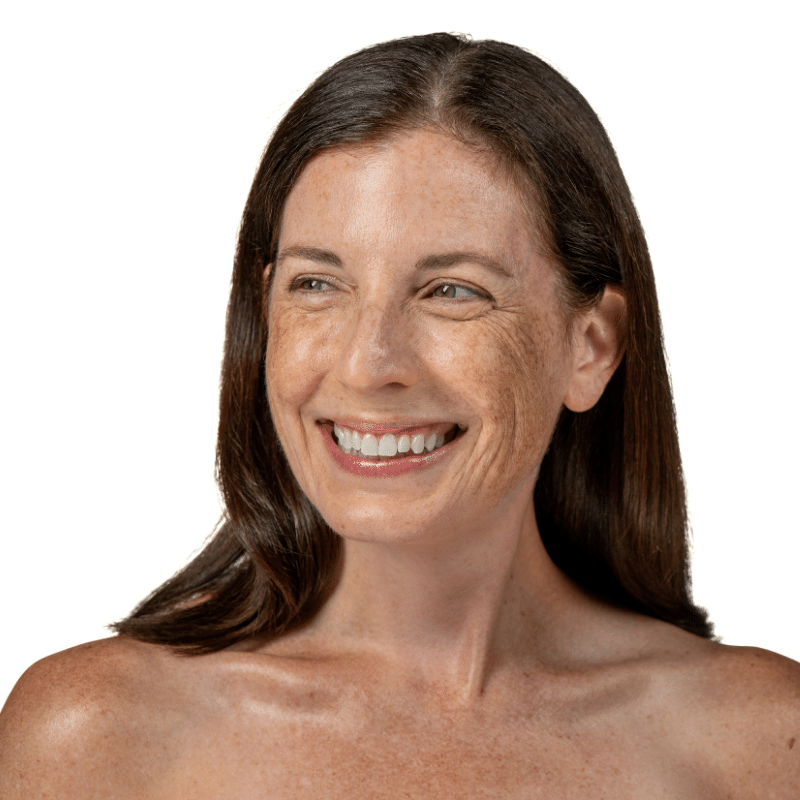
Moisturizer for Aging Skin
As you get older, your body slows production of sebum, an oil needed to keep your skin moisturized and protected from friction. This is why your skin may have become drier and feel more sensitive than it used to. Even if you struggle with oiliness, it’s still important to keep skin moisturized to maintain a strong skin barrier and reduce signs of aging.
When choosing a moisturizer for mature skin, look for products labeled “noncomedogenic,” which means they won’t clog pores. We recommend selecting three moisturizers — a light option for daytime (bonus points if it has SPF 30+); a thicker, more intensive moisturizer for nighttime use; and one for your body.
Here are some of the best moisturizer ingredients for aging skin:
- Ceramides: Strengthens the skin barrier to keep moisture from escaping
- Hyaluronic acid: Can hold 1,000 times its weight in water, helping hydrate and plump the skin
- Glycerin: Another powerhouse ingredient for deep hydration
- Niacinamide: Great for improving hyperpigmentation such as age spots
Sunscreen for Aging Skin
Nothing ages your skin faster than unprotected UV exposure. To avoid further signs of aging, it’s essential to protect your skin from sun damage every day. Mature skin benefits from a sunscreen that is moisturizing and noncomedogenic, with an SPF of at least 30. It’s also best to choose a physical sunscreen rather than a chemical one, which can be harsh on your skin. Look for zinc or titanium oxide in the active ingredients list.
Anti-Aging Skin Care Tips
Here are additional tips to help care of aging skin:
- Prevent further sun damage by protecting skin with sunscreen (SPF 30 or higher)
- Make sure to cleanse skin thoroughly and exfoliate gently
- Choose products with the right ingredients (e.g., ceramides, hyaluronic acid, mild retinols, vitamin C)
- Keep your skin hydrated from the inside out by drinking plenty of water
- Minimize pulling on the skin while cleansing or applying makeup or skincare products
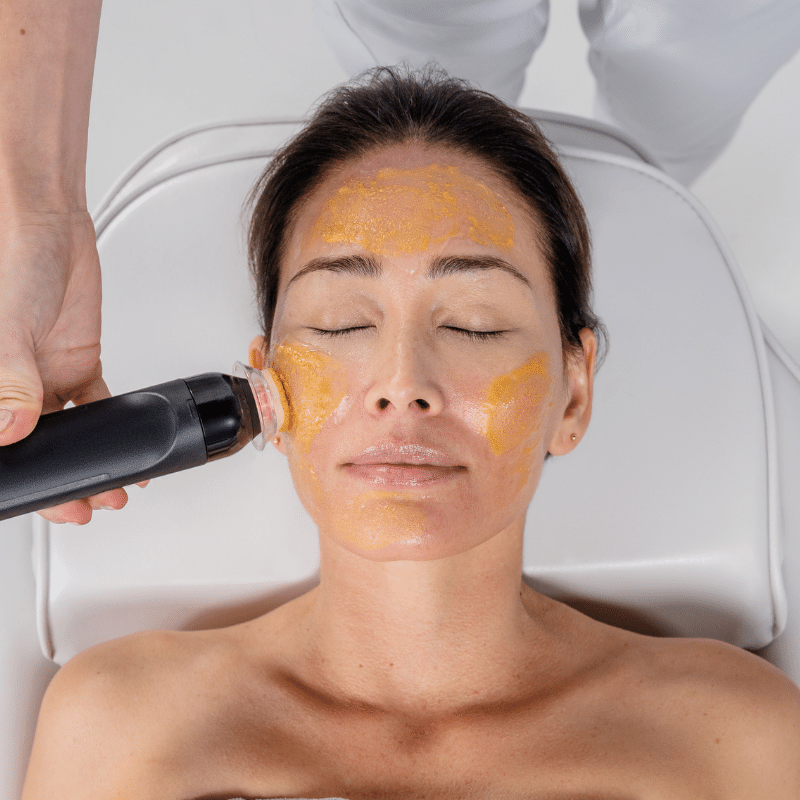
The Best Anti-Aging Facial Treatment
Professional anti-aging facial treatments are the best defense against signs of aging. These treatments are performed by experts using the latest technologies and the most transformative ingredients, making them an essential part of your overall anti-aging skincare routine. Schedule a professional facial about every four to six weeks to see the best results.
For skincare professionals, it’s important to find the most appropriate treatment for your clients’ aging skin needs. While some standard facial treatments can help signs of aging, they can also be harsh, overly drying, or have inconsistent results. Glo2Facial customizations are the best option to treat mature skin gently with highly effective and long-lasting results, natural ingredients, and no downtime.

Glo2Facial Revive for Mature Skin
The Glo2Facial Revive customization is the best treatment option for aging skin. Glo2Facial is the only facial technology that triggers a natural oxygenation process within the skin. This creates the ideal conditions to nourish and transform skin from the inside out so you experience immediate and long-lasting results.
Glo2Facial Revive uses these potent, all-natural ingredients:
- Red algae: Contains anti-aging properties to inhibit enzymes that break down collagen in the skin, improve elasticity and reduce the appearance of fine lines
- Caffeic acid: Increases collagen production and prevents premature aging
- Retinyl palmitate: A milder form of retinol found in its natural state, which helps even skin tone and reduce sun damage
- Ferulic acid: Strengths the skin barrier, smooths texture and reduces the appearance of fine lines and wrinkles
- Willow bark: A natural form of salicylic acid used to shed dead skin cells, decrease redness and inflammation, and treat acne
- Vanilla: Contains anti-bacterial, anti-inflammatory and antioxidant properties to help to slow down signs of aging like fine lines, wrinkles, and age spots
- Edelweiss: Improves firmness and hydration for more supple skin
- Shea butter: Contains high concentrations of fatty acids and vitamins to soften the skin and provide anti-inflammatory and healing properties
After a Glo2Facial Revive, you can expect:
- Improved elasticity of the skin resulting in a smoother appearance
- A more even skin tone
- Reduced sun damage to diminish signs of aging
- Fewer fine lines and wrinkles
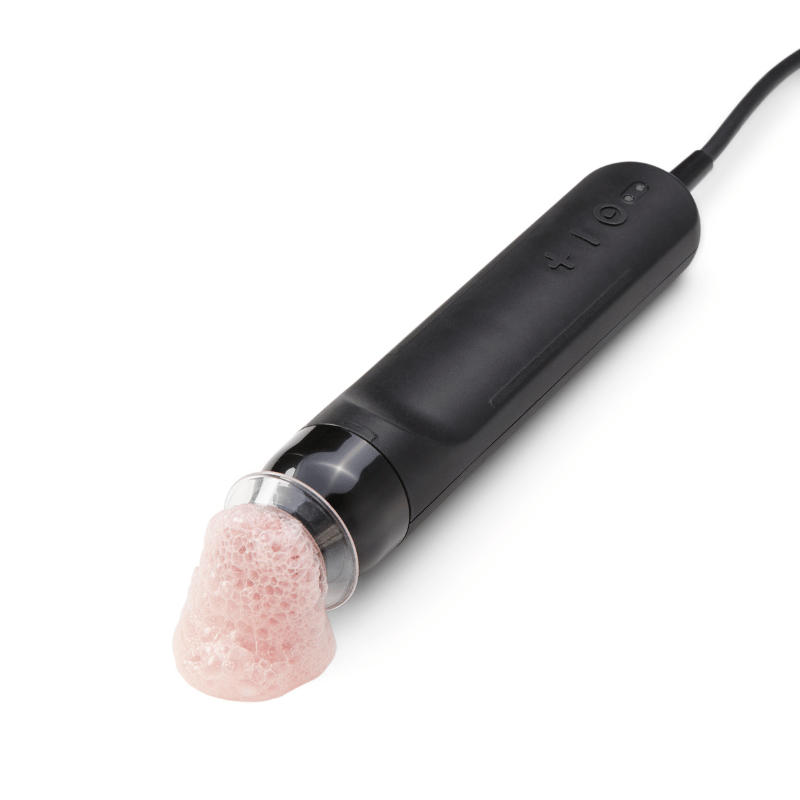
Anti-Aging Skin Care FAQ
We’ve got answers to your most pressing questions about mature skincare.
What is the best skincare routine for anti-aging?
The best skincare routine for aging skin is a blend of regular professional treatments like Glo2Facial’s Revive and an at-home routine that incorporates high-quality ingredients that fight wrinkles, uneven texture, hyperpigmentation, and dryness. Your cleanser, toner, moisturizer, and sunscreen should all contribute to supporting mature skin. Look for ingredients like squalane, peptides, ceramides, hyaluronic acid, vitamin C, and caffeic acid, to name a few.
What is the main cause of aging skin?
Sun damage is the leading cause of signs of aging, followed by the body’s decrease in collagen and elastin production.
What is the best facial treatment for aging skin?
Regular professional facial treatments are an important element of an anti-aging skincare routine. Glo2Facial Revive is an excellent option to address mature skin concerns and get stunning results. Glo2Facial is the only facial technology that triggers a natural oxygenation process within the skin. This creates the ideal conditions to nourish and transform skin from the inside out so you experience immediate and long-lasting results.
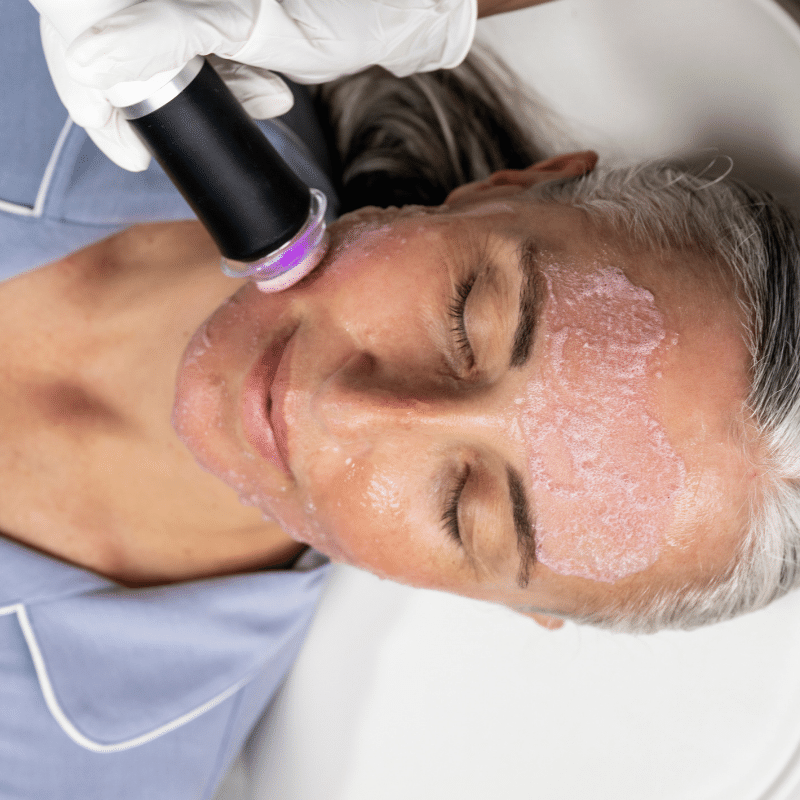
Turn Back the Clock with Glo2Facial
Aging skin poses new challenges like wrinkles, uneven texture, hyperpigmentation, and dryness. It’s important that your skincare routine changes to address these and support the skin barrier. Using high-quality products at home and getting regular professional facial treatments is the best way to ensure your skin stays healthy and beautiful at any age.
Have you noticed changes in your skin as you’ve gotten older? Find a local Glo2Facial provider to book a skin-rejuvenating treatment.
Do you have clients with mature skin? Give them the best and most consistent results with Glo2Facial’s gentle, effective treatments. Learn more about becoming a Glo2Facial provider.
Facial Cosmetic Procedures: Surgical vs. Non-Surgical
There is a huge variety of facial cosmetic procedures available on the market today. Which one is right for you?
To help you decide, we’ve broken them down into two distinct categories: surgical and non-surgical. This article will cover the most popular procedures for each category, as well as their benefits and drawbacks.
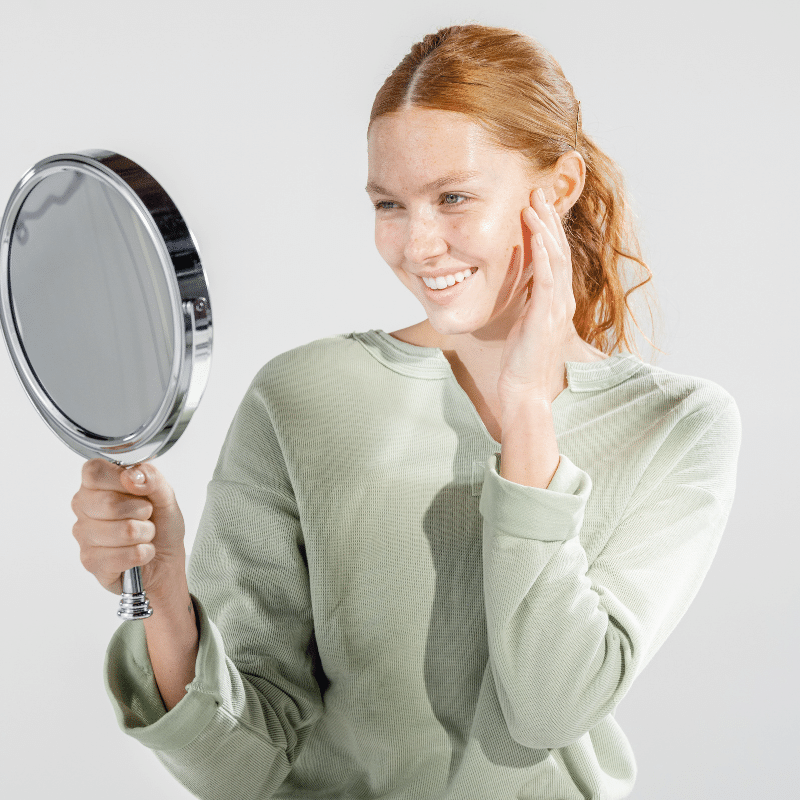
Cosmetic Surgery
Cosmetic surgery is a category of elective surgical procedures intended to improve your physical appearance. The procedures are invasive, meaning they involve penetrating the skin to make changes beneath the surface, and they require anesthesia.
Cosmetic surgical procedures are popular because they offer dramatic results that can’t be achieved through non-invasive methods. Some of the most popular options are:
- Eyelid surgery (blepharoplasty): Removes sagging, excess skin from the eye area to get rid of bags under the eyes and rejuvenate droopy eyelids.
- Face lift (rhytidectomy): Involves pulling back the skin on either side of the face to remove excess skin and wrinkles to tighten the overall look of the face.
- Cheek lift: Raises the soft tissue in the cheeks to make them look fuller.
- Brow lift: Removes excess skin from the brow area to smooth forehead wrinkles and raise drooping brows.
- Nose reshaping (rhinoplasty): Reshapes the nose to your desired look, often making it smaller, narrower, or straighter.
- Chin augmentation (genioplasty): Recontours the chin to be wider or narrower, more square or more round, to make it harmonize with the rest of the face.
Benefits of Cosmetic Surgery
Many people choose cosmetic surgery because it offers the most significant results in areas of wrinkle reduction, skin rejuvenation, and facial contouring. It also offers flexibility, allowing patients to choose – to some extent – how they look. This sets it apart from non-invasive procedures, which provide limited, temporary changes in appearance.
The Downsides of Cosmetic Surgery
There are important downsides and risks to consider before getting cosmetic surgery.
- Expensive, with procedures costing upwards of $4,000
- Potential scarring
- Recovery time ranging from days to weeks
- Injuries, such as lacerations and excessive bleeding, which may require additional surgery
- Death from complications related to infection or anesthesia
Your surgeon will discuss any health risks during your consultation so you can make an informed decision about whether cosmetic surgery is right for you.
Unlike many spa treatments, Glo2Facial requires no downtime and is safe to use before cosmetic surgery (unless otherwise directed by your doctor). However, you should wait until your doctor gives you the ok before getting a Glo2Facial after cosmetic surgery.
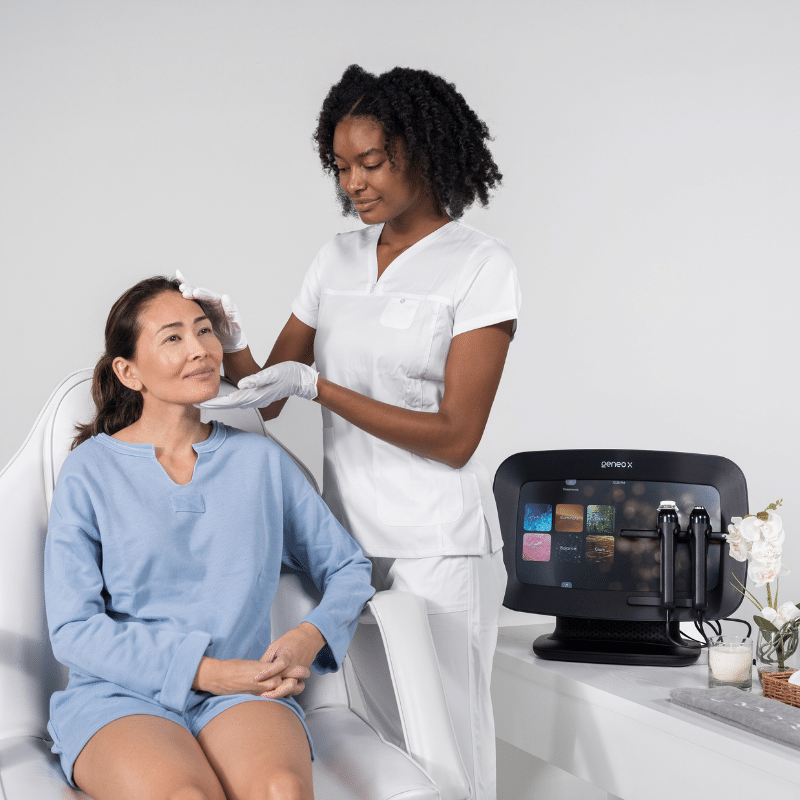
Non-Surgical Cosmetic Procedures
Non-surgical cosmetic procedures are those that are either non-invasive or minimally invasive and don’t require anesthesia. Minimally invasive options such as Botox involve injections into the skin using needles. Non-invasive procedures, like professional facial treatments, don’t breach the skin’s surface and instead use a mix of technologies and potent, skin-boosting ingredients to achieve results.
Non-surgical cosmetic procedures have exploded in popularity due to their affordability, lower risk, and little to no downtime.
Popular non-surgical cosmetic procedures for the face:
- Facial treatments: Provide hydration and nourishment to the skin using skincare technologies. For example, the Geneo Balance Facial uses a mix of Oxygeneo, ultrasound, and massage combined with all-natural ingredients to create an effective procedure with no downtime.
- Dermal fillers: Make the skin look fuller and more youthful.
- Chemical peels use chemicals to remove layers of skin to reduce the appearance of wrinkles and scarring.
- Dermabrasion: Uses a device to remove layers of skin so that it grows back smoother and younger looking.
- Laser treatments: Many options available, from hair removal to increasing collagen production.
Benefits of Non-Surgical Cosmetic Procedures
Non-surgical facial treatments are extremely popular, and many people opt for less invasive procedures over surgery because:
- They involve less risk of injury or infection.
- There’s little to no downtime required.
- Procedures are quick, with most ranging from 30-90 minutes.
- They’re much more affordable, with treatment options as low as $100.
- They can provide excellent, natural-looking results.
There is a huge variety of non-surgical cosmetic procedures, and each one provides specific benefits (e.g., wrinkle reduction, hydration, hair removal, collagen production). Whatever your skincare goals, there is a non-surgical facial treatment out there for you.
The Downsides of Non-Surgical Cosmetic Procedures
The downsides of non-surgical cosmetic procedures are that they aren’t permanent, meaning you’ll need to get regular treatments to maintain results, and the results are less dramatic than those achieved by surgery.
When compared to cosmetic surgery, there are fewer health risks involved with non-surgical options, but it’s still important to be aware of them:
- Injectables: Dermal fillers such as Botox can cause bruising, swelling, and tenderness. The most serious risk for injectables is that the provider accidentally injects the product into a blood vessel. This can cause tissue death, stroke, or blindness.
- Chemical peels: This treatment uses carbolic acid, which can cause irregular heartbeats and kidney or liver damage in some individuals. It can also cause hyperpigmentation and scarring.
- Dermabrasion: The biggest risk with dermabrasion is permanent pigmentation that makes skin look blotchy. Scarring and infection are also possible, though rare.
- Facials: Redness, irritation, and peeling are common after some facial treatments. However, gentle options such as Geneo are very low risk and require no downtime, while still providing exceptional results.
You can minimize risks associated with non-surgical cosmetic procedures by seeking out reputable, highly qualified providers.
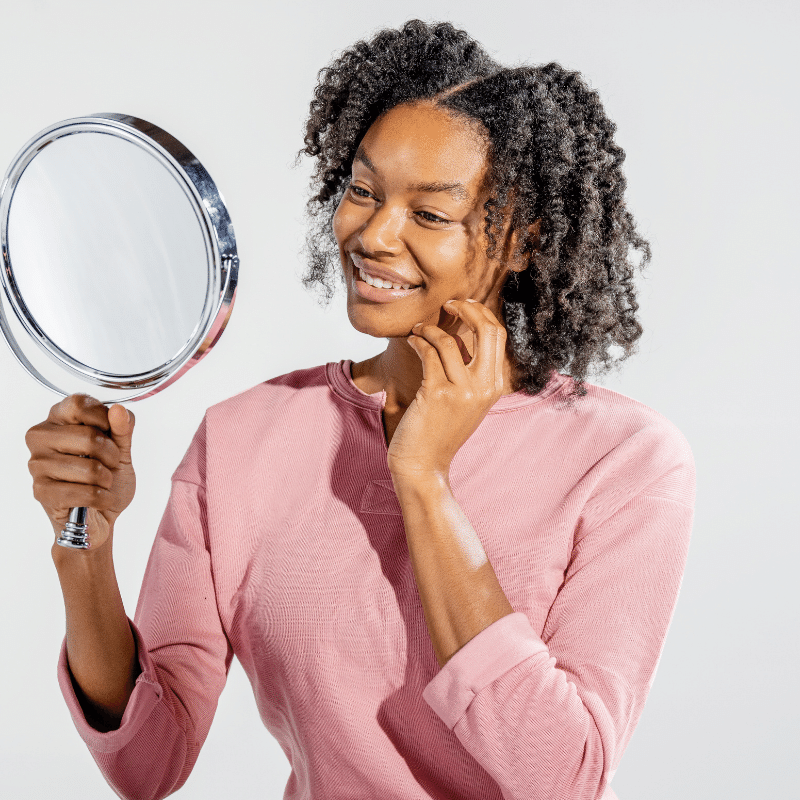
Facial Cosmetic Procedures FAQ
Cosmetic procedures generate many questions. Below are answers to some of the most common questions.
What is the best procedure to make your face look younger?
The best surgical procedure to make your face look younger is a face lift. The best and most gentle non-surgical option is a Glo2Facial Revive customization, which minimizes fine lines and wrinkles in mature skin.
What is the most popular facial surgery?
Rhinoplasty (nose job) is the most popular facial surgery, followed by face lifts.
What are the best non-surgical facial treatments?
The best non-surgical facial treatments combine advanced technologies and ingredients that are potent but not harsh. Glo2Facial features ultrasound technology and all-natural ingredients that support the body’s natural skin processes.
What is the most effective non-surgical treatment for wrinkles?
The most effective non-surgical treatment for wrinkles is a Glo2Facial Revive customization, which minimizes fine lines and wrinkles in mature skin. Dermal fillers can also smooth out wrinkles, though these are more invasive than a Glo2Facial.

A Gentle Facial Cosmetic Procedure with Amazing Results
Whether your goal is to reshape your facial features or achieve glowing, younger-looking skin, there’s a cosmetic procedure available to meet your needs. Choose cosmetic surgery for significant structural changes or excess skin removal, and opt for non-surgical cosmetic treatments to reduce wrinkles, scarring, or pigmentation and maintain healthy skin.
For the most gentle and effective facial treatment, choose Glo2Facial. Find a provider near you to book a treatment for beautiful, supple skin.
If you’d like to offer Glo2Facial’s innovative, all-natural treatments to your clients, become a Glo2Facial provider!
How to Hydrate Skin from the Inside Out
When it comes to achieving smooth, supple skin, hydration is the name of the game. We’ve got all the information you need to achieve skin hydration perfection, from drinking enough water to choosing the right skincare products.
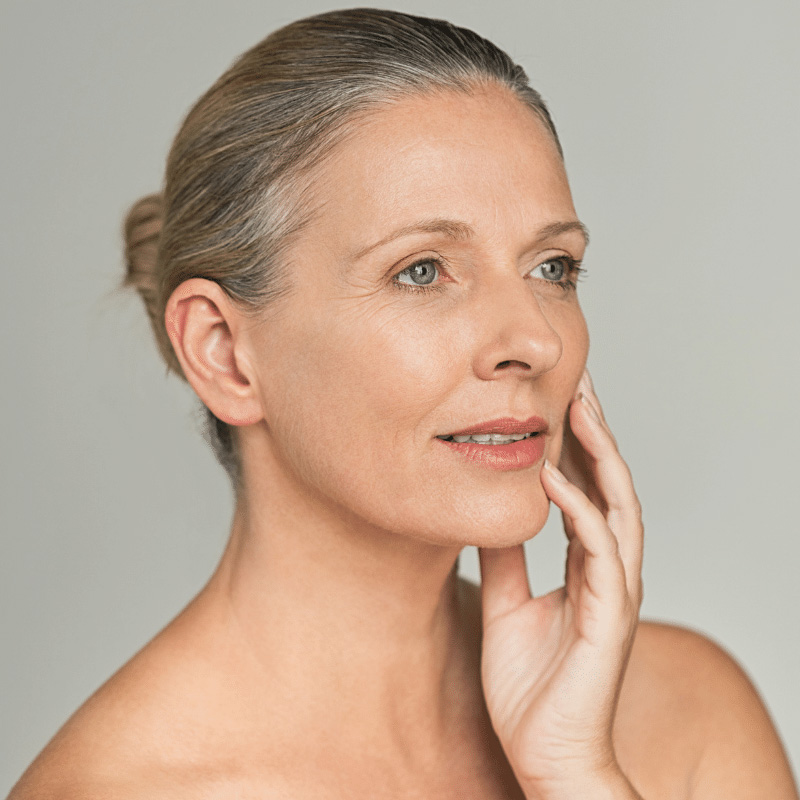
What Makes Skin Lose Hydration?
Our bodies naturally lose hydration throughout the day, and for many people, this is the leading cause of dehydrated skin. Typically, women lose about two quarts of water daily from regular activity, and men lose up to three quarts.
There are many other common reasons for dehydrated skin, including:
- A diet high in salt or sugar
- Drinking too much alcohol
- Intense activity
- Hot weather
- Illness
- Prolonged hot showers
How to Keep the Skin Hydrated - 8 Best Practices for Skin Hydration
It’s time to rescue your skin from the side effects of dehydration. Below are eight best practices to keep your skin hydrated and looking its best.
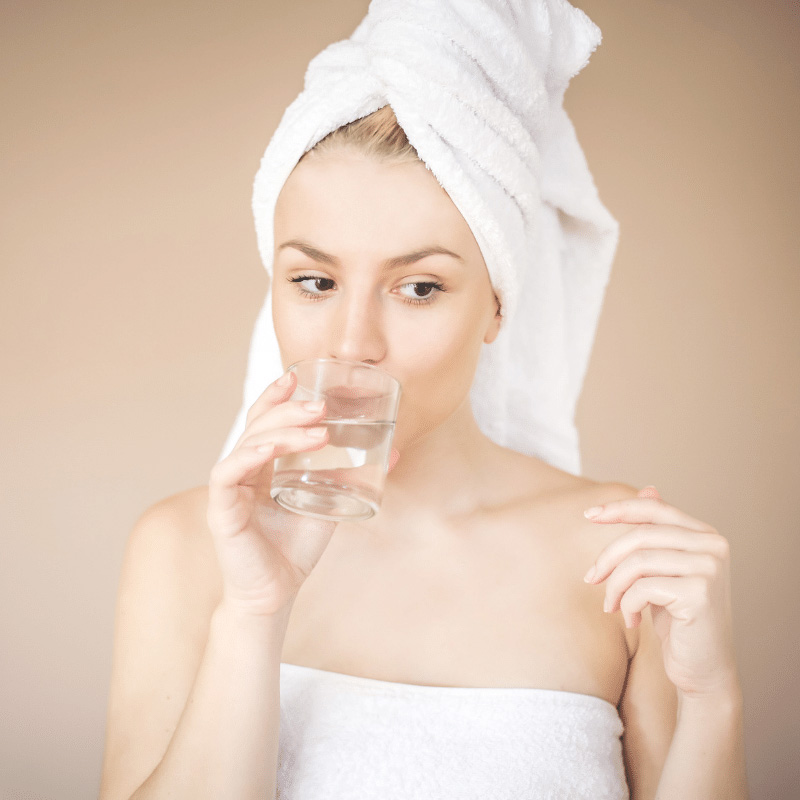
1. Drink enough water
The most essential step in staving off dehydration is also the simplest: Drink enough water. Our bodies are between 50-70% water, so proper hydration is critical to the function of every organ. Skin is the largest organ, so it’s no surprise that it immediately shows the negative effects of dehydration. Drinking eight cups of water a day is a good baseline to aim for to keep your skin hydrated.

2. Pay attention to your diet
You can make many easy dietary changes to help keep your skin hydrated. Including more water-rich foods is one of the best ways to offset natural hydration loss. They provide a healthy dose of H2O, as well as the vitamins, minerals, and antioxidants to help your body use it efficiently.
Consider adding more of these to your diet to supplement your water intake:
- Fruits such as melons, strawberries, peaches, and oranges
- Broths and soups
- Cucumbers
- Zucchini
- Lettuce
- Tomatoes
- Celery
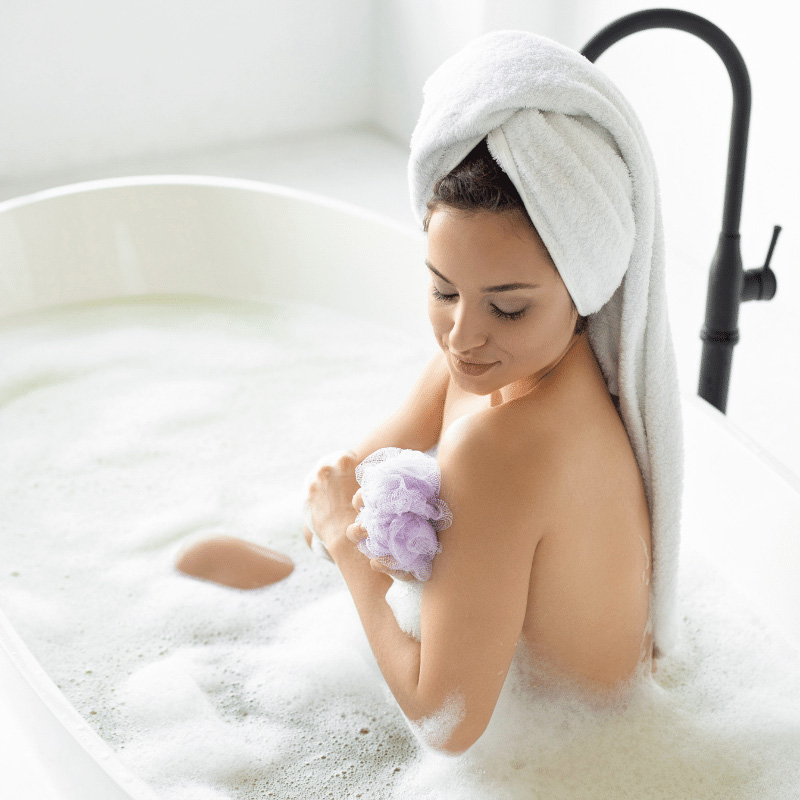
3. Limit hot showers and baths
Showering or bathing in hot water can cause your skin to dry out. Hot water can strip away the natural oils that keep your skin lubricated, and it can cause you to sweat. As the hot water raises your body’s temperature, you naturally start to sweat as a way to cool off, which can deplete your hydration level quickly.
If the idea of a cold shower or bath fills you with dread, we have good news for you. You can mitigate the skin-drying effects of a hot shower or bath by keeping them short. If you’re in and out before you begin to sweat, you won't lose any water. You can also combat the loss of moisture-retaining natural oils by keeping the water lukewarm rather than steaming hot.
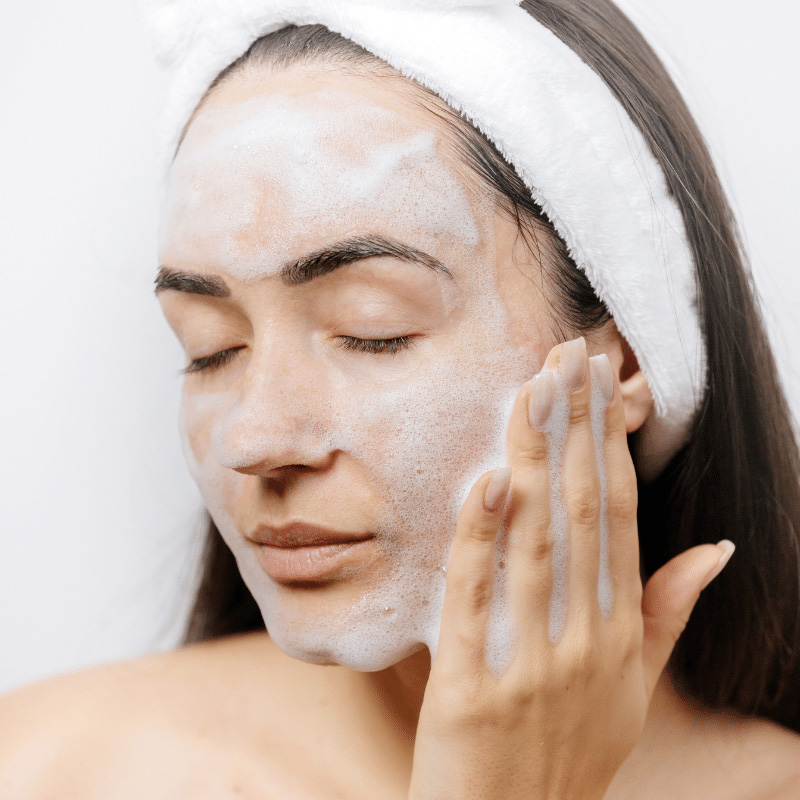
4. Avoid overwashing
Overwashing can strip away important natural oils that help seal in your skin’s hydration, eventually causing it to dry out. It’s best to wash your face and body no more than twice a day, once in the morning and once at night. If your skin is especially dry, just wash it once at night so you can clear away the day’s dirt and bacteria.
It’s more difficult to avoid overwashing your hands. Because your hands touch so many potentially germy things throughout the day, it’s essential to wash them often. You can reduce the drying effects of overwashing your hands by choosing a gentle soap and always applying a moisturizing lotion afterward.
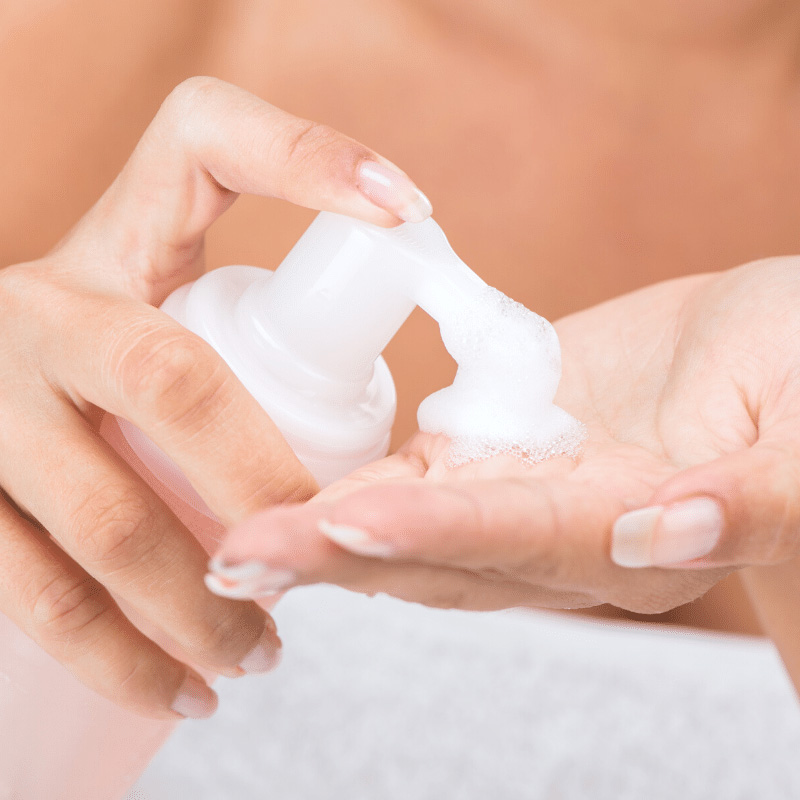
5. Use a gentle cleanser
Many cleansers contain drying chemicals such as sulfates, alcohol, and harsh surfactants that can remove the natural oils that help protect your skin from dehydration. A gentle cleanser will remove dirt and unwanted oil without causing an imbalance in your natural moisture levels.
To choose a gentle cleanser, pick a gel- or cream-based option labeled “pH balanced.” Avoid foaming cleansers and ones that contain skin-drying sulfates, parabens, and phthalates.

6. Seek out hydrating skincare ingredients
In addition to avoiding harsh cleansers, it’s important to look for skincare products that increase hydration. There’s a big difference between moisturizing products and hydrating products. Moisturizing products help prevent moisture loss by essentially sealing it into your skin. Hydrating products increase your skin’s moisture level by coaxing water from the innermost layer to move outwards.
Humectants are the key ingredients in hydrating skincare products. The most popular humectant right now is hyaluronic acid, which can hold 1,000 times its weight in water. Aloe, alpha hydroxy acids, and glycerin are other useful humectants to look for in the ingredients list.

7. Use extra moisturizing products overnight
Skin goes into repair mode as you sleep, focusing on collagen production and cell regeneration. This makes it the perfect time to add extra moisturizing products to your skin. Look for a product with moisturizing ingredients such as ceramides, silicones, and occlusives (e.g., cocoa butter, castor oil, lanolin). These all help prevent trans-epidermal water loss, which will help your skin stay healthy and moisturized.

8. Protect your skin from the elements
The elements can also do a number on your skin’s hydration level. As humidity levels drop in winter, so does your skin’s moisture content. You may also experience a big drop in your body’s thirst response, making you more likely to skimp on your daily water intake. In the heat or when you’re bundled up against the cold, your body can lose significant amounts of water as you sweat.
Your biggest weapon against dehydration from the elements is to increase your water intake. You can also limit your time outdoors when it’s sweltering and get a humidifier to use inside during winter.
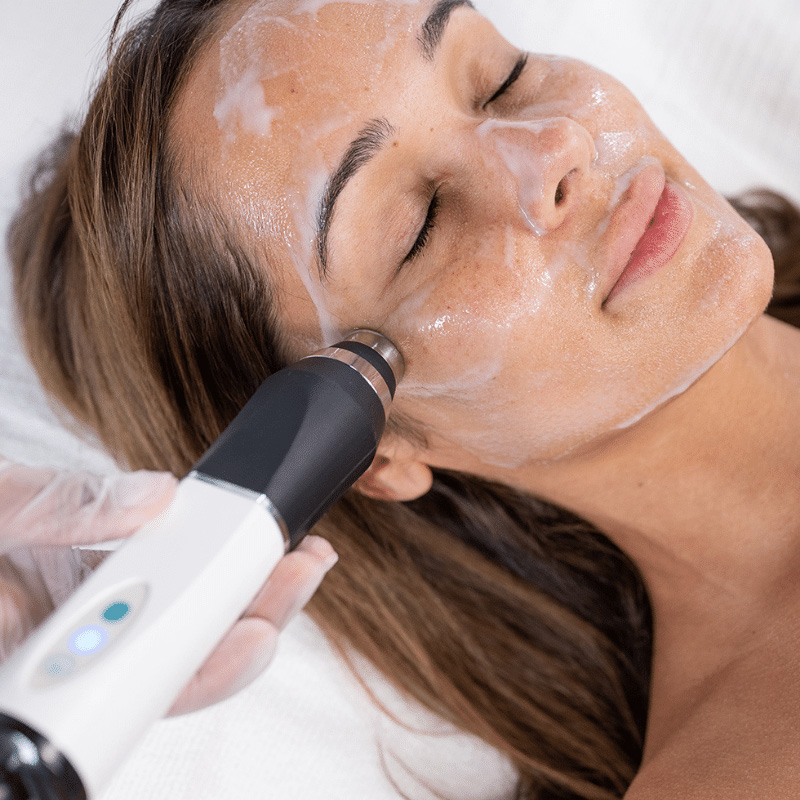
9. Treat your skin to hydrating spa treatments
Your at-home skin care routine may not be enough to treat dehydrated skin, especially when you’re combating severe weather or environmental factors. Spas and estheticians offer a range of hydrating skincare treatments using specialized techniques, technology and ingredients to get results that you simply can’t achieve at home.
Hydrating facial treatments, mud masks, and gentle scrubs are great options. Glo2Facial treatments provide deep, lasting hydration, increase oxygenation, gently exfoliate, and promote skin cell turnover to bring healthy, hydrated cells to the surface.
Even better – Glo2Facial facial treatments can be used just about anywhere on the body, so you can have healthy, hydrated, glowing skin from head to toe. Check out all of our customized treatments here, and find a Glo2Facial provider near you.
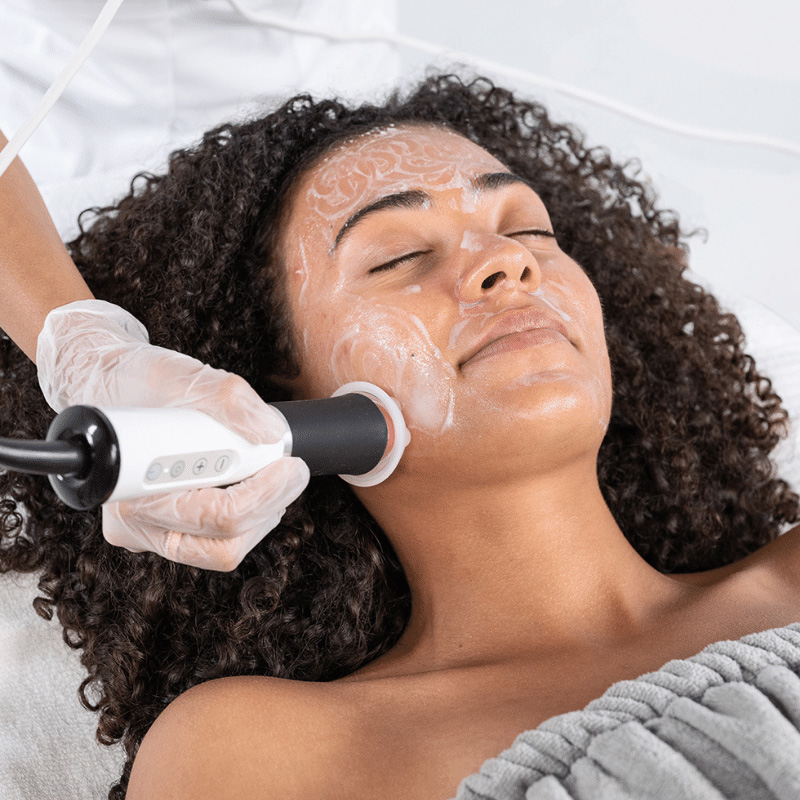
Try a Facial for Dehydrated Skin with Glo2Facial Today
Hydration is the key to banishing flaky, dry skin and maintaining a beautiful complexion. You can improve your skin’s hydration in many ways, from drinking plenty of water to optimizing your skincare routine. Implement the tips above, and you’ll be well on your way to smoother, younger-looking skin.
For even more hydration, treat yourself to a Glo2Facial. It provides excellent skin hydration benefits, and our Glo2Facial Hydrate customization goes above and beyond. Find a Glo2Facial provider near you today!
Are you a professional interested in offering Glo2Facial to your clients? Click here to learn more about becoming a Glo2Facial provider today.
Facial Treatments 101: Choose the Best Facial for You
Facial treatments are an excellent way to improve the overall health of your skin while also relaxing and letting go of all your stress. With so many options available it can be tough to know what each type of facial does and which will be best for you.
To help you choose the best facial treatment for your unique needs, we’ll review the techniques and benefits of four of the most popular types of facials:
- European facials
- Hydrating facials
- Oxygen facials
- Facial peels
Key Benefits of a Facial Treatment
There are a variety of facial treatments available, and though they differ in technique, active ingredients, and overall results, they still provide many of the same benefits.
- Deep cleansing: Facials help remove oil and dirt from deep within your pores, leading to fewer blemishes and glowing skin.
- Better blood circulation: Facial treatments can stimulate circulation, which helps bring more oxygen and nutrients to your skin and reduces puffiness.
- Moisturizing: Facials hydrate the skin to make it supple and reduce issues such as flakiness and irritation.
- Reduced scarring: Acne is frustrating enough on its own, but it can also leave long-lasting scars. Facial treatments can help reduce the appearance of scars and even out skin tone.
- Stress relief: Getting a facial is an act of self-care. It’s a great way to relieve stress while also improving the look and feel of your skin.
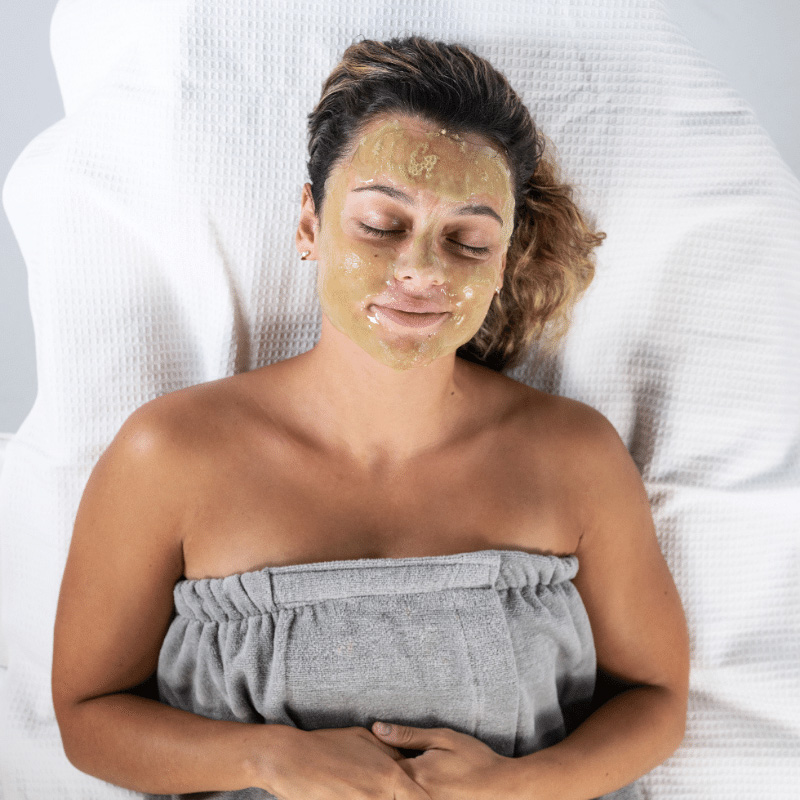
What is a European Facial?
A European facial, also called a classic facial, is the most common facial treatment. It’s an excellent option if you’re looking for a way to de-stress and pamper yourself. Your esthetician can customize the type of products they use during the treatment, such as moisturizers, and masks, to suit your specific skincare needs. This makes European facials appropriate for all skin types.
Glo2Facials are an innovative take on the European facial method, and offer immediate and long-lasting results. Learn more about Glo2Facial treatment customizations here.
What Does a European Facial Include?
A European facial includes: Steaming, cleansing, exfoliating, massaging, masking, and moisturizing.
A typical European facial starts with an esthetician gently steaming your face to open your pores. They then cleanse and exfoliate your face to remove impurities and dead skin cells that can cause a dull complexion.
Next, they perform a facial massage that stimulates circulation and helps give your skin a healthy glow. It’s also deeply relaxing. The final steps are a face mask followed by a serum or moisturizer to condition your skin.
How Much Does a European Facial Cost?
A classic European facial costs between $50 and $120, depending on how basic you want the services to be. Many salons offer tiers for classic facials, allowing you to customize the services you want. For example, you may be able to choose a simple steam, cleanse, and moisturize option or a more involved process that includes all the steps covered above as well as extractions.
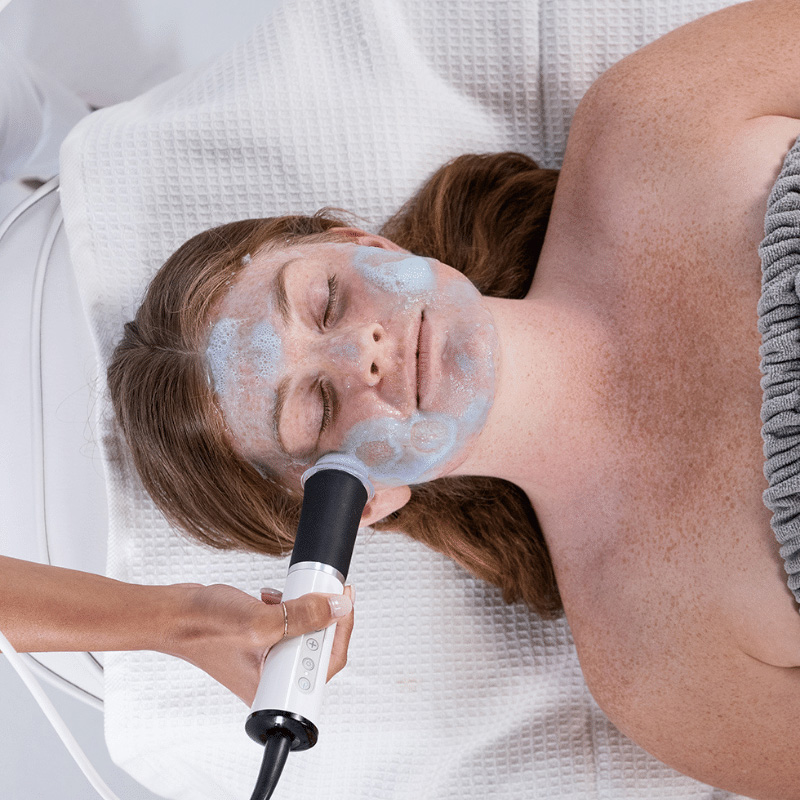
What Is a Hydrating Facial?
A hydrating facial is a treatment that’s focused primarily on deeply moisturizing the skin to reduce the look of fine lines and banish flakiness and irritation. A hydrating facial can benefit all skin types, though it’s especially helpful if you have naturally dry or combination skin. It’s also a great option during the wintertime. Cold, dry air saps moisture from the skin, and this type of facial provides an instant dose of skin-soothing hydration.
Good to know: A hydrating facial is different from a hydrafacial. A hydrafacial is a type of hydrating facial performed with a proprietary device that removes impurities with a suction action.
If you’re looking for deep, lasting hydration, Glo2Facial's Hydrate customization uses innovative technology to enhance moisture retention, strengthen the skin barrier, and increase skin metabolism for a replenished and revitalized complexion.
What Does a Hydrating Facial Include?
A hydrating facial includes: Deep oil cleansing, exfoliation, steaming, masking, and moisturizing.
A hydrating facial has many of the same steps as a European facial, but it’s done with products specifically chosen for their moisturizing properties. Your esthetician will begin with a deep oil cleanse, followed by exfoliation to remove dead skin cells and steam to open your pores. This puts your skin in the best condition to accept the rest of the treatment. For the last step, you’ll receive a hydrating mask and a rich moisturizer to lock in all the hydration.
How Much Does a Hydrating Facial Cost?
A basic hydrating facial can be done at home for just the cost of the materials used, while treatments done professionally can range from $60 to $200.

What is an Oxygen Facial?
An oxygen facial uses highly pressurized oxygen loaded with nutrients your skin needs. The oxygen is applied directly into the outer layer of skin on your face and neck. This nourishing treatment can promote collagen growth to make your skin more supple and reduce wrinkles and other signs of aging. It works well on all skin types.
While Glo2Facials are not considered oxygen facials, oxygenating the skin is a key factor in the innovative technology and enhanced processes used in all Glo2Facials.
Instead of applying pressurized oxygen to your skin, “Glo2Facial’s oxygenation process triggers the body’s natural, physiological process of producing oxygen to increase oxygen levels internally within skin. Oxygen is carried to the surface of the skin where the heightened levels of oxygen prep the skin to absorb nutrients throughout the rest of the facial treatment.”
Click here to learn more about how Glo2Facials work, and how our technology provides significantly enhanced results compared to other facial methods.
What Does an Oxygen Facial Include?
An oxygen facial includes: Cleansing, exfoliation, pressurized oxygen treatment.
As with most treatments, an oxygen facial starts with cleansing and exfoliating to prep the skin. Your esthetician will then use a device to apply nutrient-rich, pressurized oxygen to your face and neck, rejuvenating and nourishing your skin.
How Much Does an Oxygen Facial Cost?
An oxygen facial usually costs between $100 and $200, though some clinics charge as much as $500.

What is a Facial Peel?
A facial peel, sometimes called a chemical peel, is a treatment that removes layers of skin. It’s done with a chemical solution commonly made from lactic, salicylic, and glycolic acids. After a peel, your skin grows back smoother, more evenly toned, and younger looking. A peel can also make scars less visible.
What Does a Facial Peel Include?
Unlike other facial treatments which are done by an esthetician, a facial peel (especially a deep peel) is typically performed by a dermatologist as an outpatient procedure.
There are three levels of chemical peel – light, medium, and deep. The three levels refer to how many layers of skin the peel removes. The more layers removed, the more effective the peel. However, it’s important to keep in mind that medium and deep peels can leave your face red for several weeks as the skin heals to reveal a smoother, fresher complexion.
Facial peels are not used with Glo2Facial.
How Much Does a Facial Peel Cost?
Chemical peels cost anywhere from $100 to $6,000, depending on what level of peel you’re getting and the clinic you go to. Light peels are the least expensive, and deep peels are the most expensive.
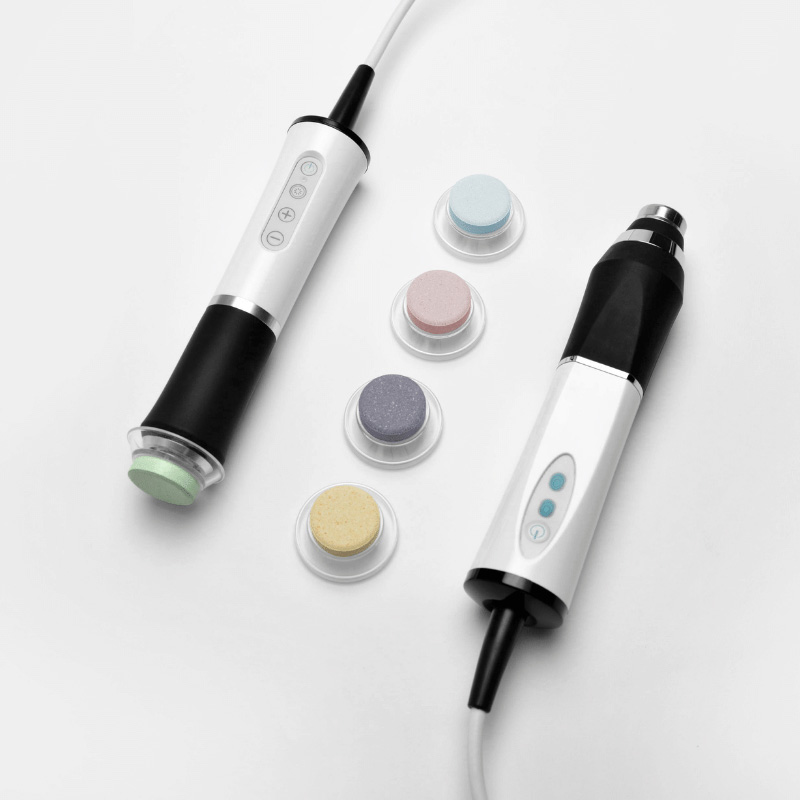
What Kind of Facial Should I Get?
The best facial treatment for you will depend on your skin type, budget, and what specific results you’re looking for.
- To moisturize dry skin, try a hydrating facial.
- To reduce scarring, get a facial peel.
- To rejuvenate skin, look for an oxygen facial.
- To relax and get healthy-looking skin, try a European, hydrating, or oxygen facial.
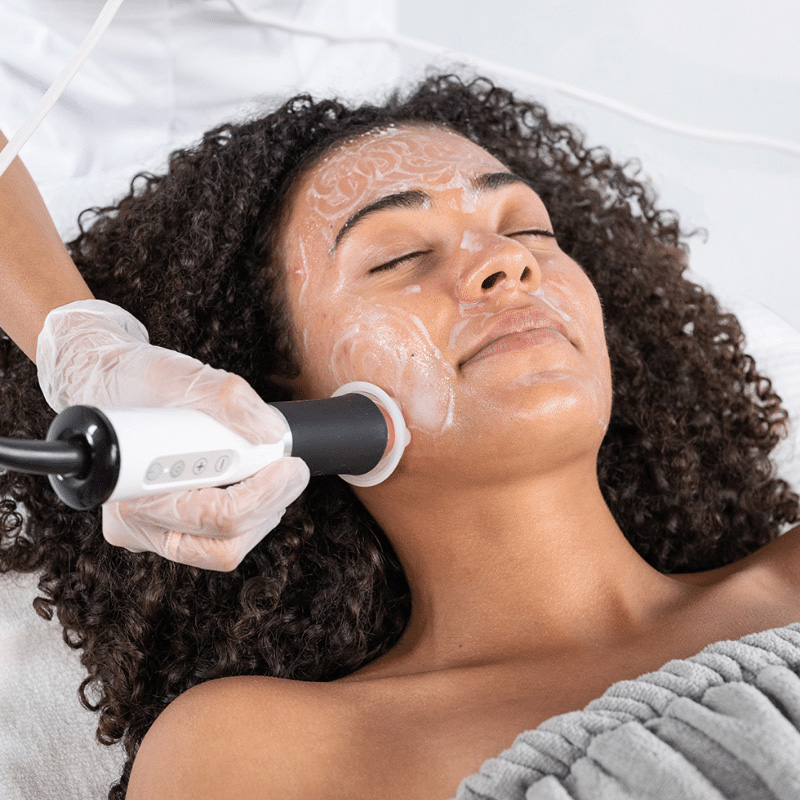
The Glo2Facial Difference
With most facials, you might receive a different experience at nearly every spa you visit–including varying ingredients, different facial methods, and a wide range of results.
The Glo2Facial is different, offering a very high standard with incredible results, no matter what spa or esthetician you receive your facial from.
To help you find the perfect facial, Glo2Facial offers a range of personalized, non-invasive customizations that cater to every age and skin type. Whether you’re looking to brighten and rejuvenate, detox and balance, or smooth and firm, we have the perfect facial treatment for your needs.
Click here to find a Glo2Facial Provider near you and schedule your Glo2Facial today.
Interested in offering Glo2Facial to your clients? Learn more about becoming a Glo2Facial Provider here.
Skin Exfoliation 101: A Guide to Skin Renewal
With so many skin products on the market, it can be easy to forget about one of the simplest and most important skin care techniques: Exfoliation! Performing a home skin care routine without proper exfoliation is like trying to create a new painting on top of an already used, dirty canvas. Freshly exfoliated skin provides the ideal foundation for the rest of your skin care routine.
In this article, we’ll review why exfoliation is so essential, cover popular exfoliation methods, share ways to exfoliate your skin at home, and how at-home exfoliation compares to spa quality exfoliation.
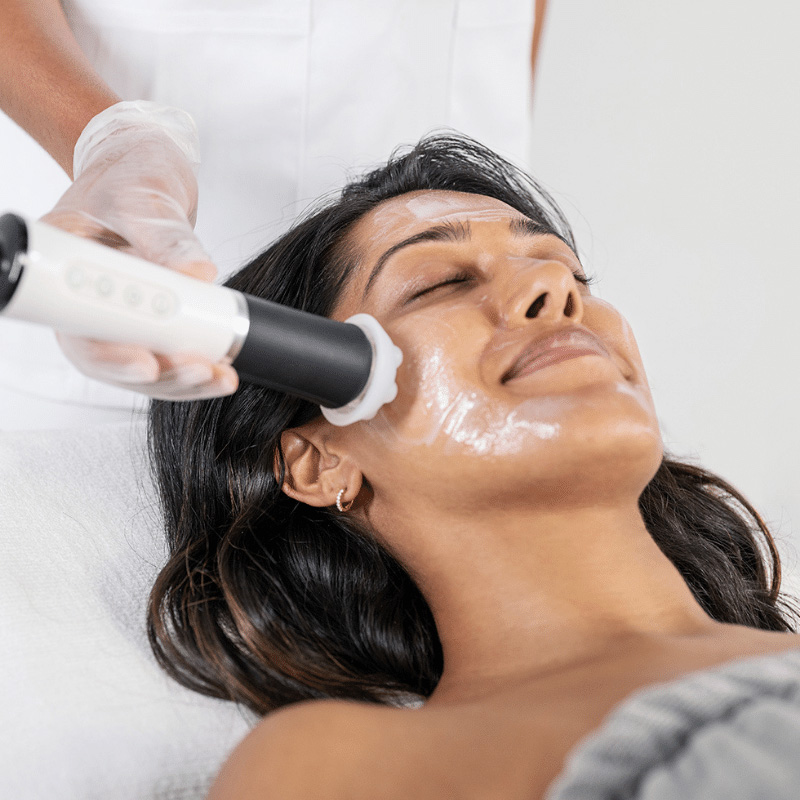
How Does Exfoliation Work?
Skin cells don’t live forever, unfortunately. In fact, millions of cells die every day, but new ones are always ready to replace them. This cycle is called desquamation.
Ideally, all old skin cells would shed on their own to allow room for the fresh cells to replace them; however, they sometimes need a little help. That’s where exfoliation comes in.
Exfoliation is the process of manually removing dead skin cells using chemical applications, grainy scrubs, or scrubbing tools. When you remove the barrier of dead skin cells, you reveal the fresh, healthy cells underneath.
Exfoliation Benefits
Exfoliation can benefit your skin in several ways:
- Uncovers fresh skin cells, and these absorb skincare products better. This means your moisturizers, serums, and other products work more effectively.
- Removes dead, grainy skin cells to reveal a brighter complexion.
- Stimulates collagen production, which is key to younger-looking skin.
- Reduces breakouts by removing dead cells that can clog pores.
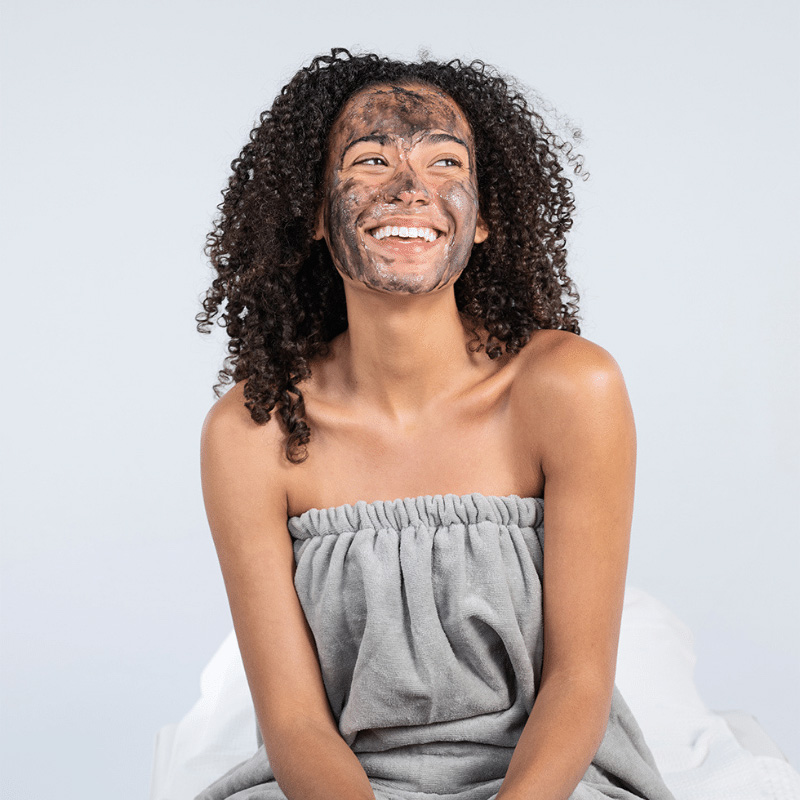
How to Exfoliate Your Skin
Exfoliating your skin isn’t difficult, but it’s important to be gentle on your skin when doing so.
If you’re at a spa, your esthetician will know exactly what to do; but there are still some steps you can take to make sure to protect your skin while getting it squeaky-clean and exfoliated.
How to Exfoliate Your Skin at Home
It’s easy to create an at-home exfoliation skincare routine. Before you begin, it’s important to know that you should only exfoliate healthy skin. If you have painful acne, a cut, or a sunburn, you can exfoliate while avoiding that area carefully or wait until your skin has healed.
The face is the most common area to exfoliate, but you can also use it to remove old skin cells from the rest of your body to reveal fresh, smooth skin.
Follow these steps to add exfoliation to your skincare routine:
- Cleanse the area: Use your usual face or body wash to clean the area you want to exfoliate.
- Apply exfoliant in a circular motion: Whether you use a scrub, exfoliating serum, or a brush, the key to proper exfoliation is using the product gently and in a circular motion. It doesn’t take much pressure to remove dead skin cells, and being too forceful can cause redness and irritation.
- Rinse: Splash the area you exfoliated with water or use a wet cloth to completely remove all the dead skin cells and any product you used.
- Moisturize: Now that your skin is clean and refreshed, it’s the perfect time to hydrate with a gentle moisturizer. Your skin may feel a little sensitive after exfoliating, so choose a moisturizer without harsh ingredients like alcohol or fragrances.
While facials are the most common skin treatment performed at spas, you can also receive exfoliating skin treatments on other parts of your body as well.
If you’ve never had an exfoliating facial or other treatment before, or have not used exfoliating products at home, make sure to communicate that to your esthetician so they can use their most gentle ingredients and techniques.
It’s also important to avoid exfoliating facials if you have a sunburn, painful blemishes, or any wounds on your face or other skin areas that you would like to treat.
Most facials and skin treatments involve an exfoliation step, so make sure you work with your esthetician to select the facial treatment and exfoliation method that will work best for your skin.
There are many different kinds of exfoliation methods available in professional spa treatments: from physical methods like microdermabrasion that use a sand-like grit to slough away old skin cells; to chemical methods like a glycolic acid that lifts away dead skin cells.
Glo2Facial uses natural ingredients in each customization pod, which react with Primer Gel to provide gentle, non-invasive exfoliation and trigger the oxygenation process within the skin.
Even better, there is a personalized Glo2Facial for every skin care need, so this gentle, innovative skin care treatment works for everyone.
How Often to Exfoliate
How often you exfoliate will depend on your skin type, and whether you’re exfoliating your skin at home or with a professional treatment.
- If you have sensitive skin, you should exfoliate no more than once a week. If your skin starts to feel irritated or extra sensitive, reduce the frequency to once every other week.
- If you have oily skin, you can exfoliate three times a week or even every other day if you don’t notice any sensitivity. You’ll likely see a reduction in breakouts once exfoliation becomes part of your routine.
- If you have dry skin, exfoliating one to two times each week will help keep your skin fresh without causing irritation.
- If you have combination skin, you can exfoliate your entire face about twice a week. You also have the option to exfoliate just your oily areas more often if needed.
Note: If you receive a spa exfoliation treatment, you may want to skip your next at-home exfoliation treatment, especially if you have sensitive skin.
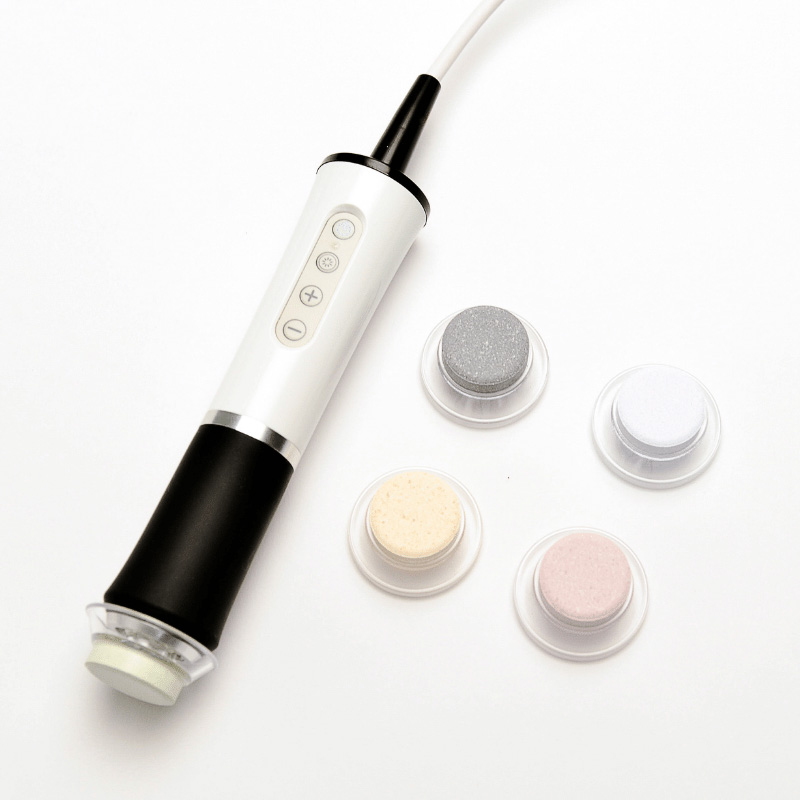
Exfoliation Tools and Products
There are two main types of exfoliation: physical and chemical. Physical exfoliators include scrubs and dry brushes, and chemical exfoliators include alpha and beta hydroxy acids.
We tend to think of chemicals — especially acids — as harsh, but chemical exfoliants are often gentler on the skin than physical ones. The strength of the chemical exfoliant is predetermined and applied in a controlled manner. Physical exfoliation is sometimes done too aggressively, especially by those new to exfoliating.
Whether you use physical or chemical exfoliation, keep in mind that your skin should never be red and sensitive after your exfoliate. If it is, this is a sign that you used a physical exfoliant too aggressively, are exfoliating too often, or your skin is too sensitive for the chemical exfoliant you used.
Skin exfoliation scrub
An exfoliating scrub is a substance that contains tiny, mildly abrasive particles that remove dull skin cells.
At Home: Scrubs are typically targeted to either the face and neck or the body, and it’s important to use them for their intended purpose. The skin of your face is more delicate and sensitive than the skin on the rest of your body. A body scrub will be too harsh for your face, and a facial scrub may not be abrasive enough for the rest of your skin.
At the Spa: Some spa treatments use an exfoliating scrub, especially on areas of the body other than the face. Scrubs are especially common in pedicures, since calloused areas like the feet can better handle the abrasive scrubbing.
Dry brush exfoliation
Dry brushing has been around for thousands of years, so it’s a thoroughly proven method for effective exfoliation, stimulating circulation and may even improve lymphatic drainage. Dry brushing removes dead skin cells with a stiff-bristled brush that you gently rub over the skin in a circular motion.
At Home: You can use this exfoliation method for both your face and your body, often with the same brush. Just be sure to choose a brush that is soft enough to use on your face without causing irritation.
At the Spa: Some spa treatments offer dry brushing, especially in combination with body or facial massage. Make sure your esthetician is very practiced with the treatment, and if the pressure feels too intense or painful at any time, speak up. Dry brushing can damage your skin if performed with too much pressure, or on overly dry, damaged, or sensitive skin.
Chemical exfoliation
Unlike a scrub or dry brush which physically removes dead skin cells, chemical exfoliants work by using acids to break down old skin cells. The acids used are usually either AHA or BHA, or a newer ingredient type known as PHA.
AHA exfoliation uses alpha hydroxy acids, BHA uses beta hydroxy acids, and PHA uses polyhydroxy acids. While they may sound a little intimidating, these ingredients are often naturally sourced (like the most common AHA, citric acid).
All of these chemicals work in similar ways to remove dead cells and smooth out skin. However, BHA exfoliation penetrates deeper into the pores, making it ideal for unclogging pores in acne-prone skin.
At Home: Since some chemical exfoliants can be irritating, make sure to test them out on a small area of your skin before applying it all over. Avoid combining chemical exfoliants with ph-sensitive ingredients, like vitamin C, in your other skin care products.
At the Spa: Make sure to communicate to your esthetician if you have very sensitive skin. PHA exfoliants (like in the Glo2Facial Hydrate customization) are often gentler on sensitive skin than AHA or BHA, while providing improved results.
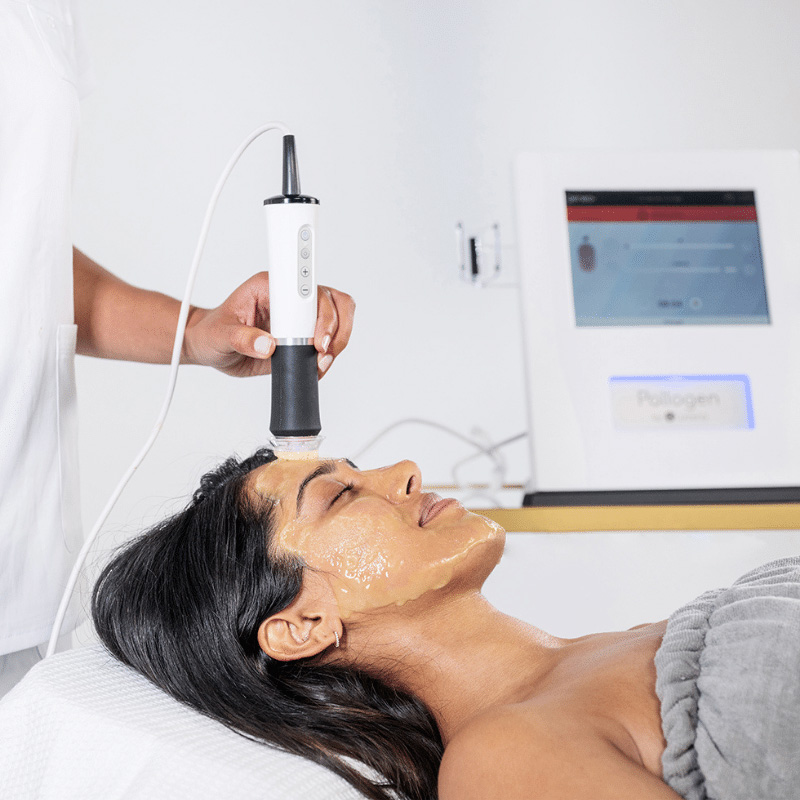
Glo2Facial Exfoliation
Unlike other exfoliation methods, Glo2Facial combines innovative technology with nourishing ingredients in the customization pods and Primer Gel to deliver a gentle, non-invasive exfoliation facial experience and trigger the oxygenation process within the skin.
Learn more about our exfoliation process and how Glo2Facial works here.
Where Can I Find the Right Exfoliation Products for Me?
Exfoliation is essential to creating an effective home skincare routine that will improve the look and feel of your complexion. To find the best skin exfoliation products for you, check out Glo2Facial’s customizable facial treatment. No matter your age, skin type, or goals, you’ll find innovative skincare options that provide immediate and long-lasting results.
And if you're ready to have skin that looks and feels better, brighter, and healthier than it has in years, click here to find a professional Glo2Facial provider near you.
6 Full Body Spa Treatment Facials to Try in 2022
Facials are what most people think about when it comes to skincare, but there are plenty of full body spa treatment options that can help you relax while treating site-specific skin issues. We’ll introduce you to six facial-style spa treatments for your whole body so you can have radiant skin from head to toe!
6 Full Body Spa Treatment Options to Try
Let’s look at four full body spa treatments that can help combat everything from “bacne” to ingrown hairs. We’ll explain what each treatment involves, why your skin will love it, and which Glo2Facial customizations we recommend for each area.
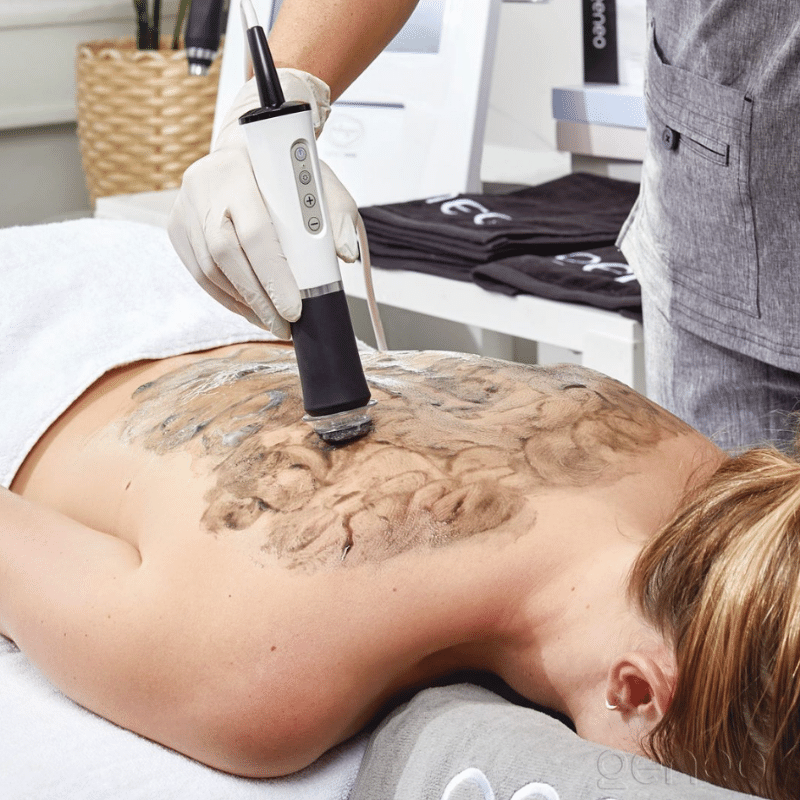
1. Back Facial
In 2020, back treatments rose in popularity in response to social distancing. It provided a way for people to get a much-needed relaxing spa treatment without the risk of prolonged face-to-face interactions. The popularity of back facials continues because they give some TLC to an area that’s often ignored during home beauty treatments.
What Is a Back Facial?
A back facial begins with a gentle steaming to open your pores and ease you into a state of relaxation. Next, your esthetician will cleanse and exfoliate the skin on your back to remove dirt, dead skin cells, and other skin-clogging impurities. If you have back acne, your treatment will include extractions to help relieve your breakouts. As the final step, your practitioner will apply moisturizer to keep your skin hydrated and refreshed.
Benefits of a Back Facial
There are many benefits to getting a back facial:
- Deeply cleanses and moisturizes a hard-to-reach (and often neglected) area
- Relieves current “bacne” and prevents future breakouts
- Helps you de-stress and enjoy a moment of self-care
- Lets you look your best in a swimsuit or backless outfit
Which Glo2Facial Customization Works Best for Your Back?
The back has a lot of oil glands, making it prone to “bacne” and hormonal skin issues. Clear up your back with this detoxifying treatment that uses bamboo charcoal to detoxify and remove skin-dulling impurities. It also improves texture and appearance without the downtime that comes with dermabrasion and other harsh exfoliation treatments, and it includes an all-natural balancing serum to provide deep hydration for long-lasting results.
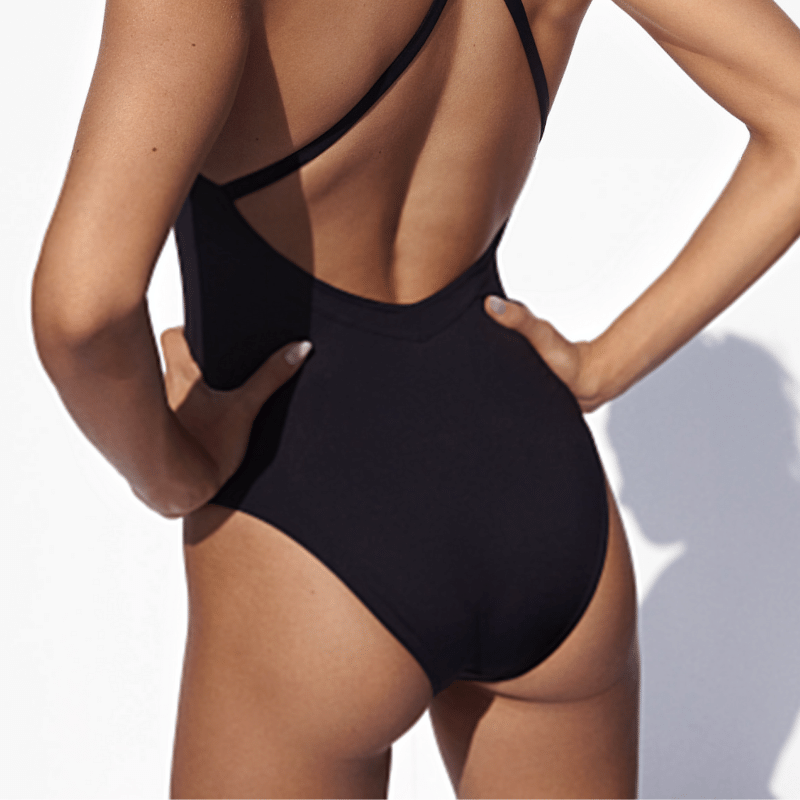
2. Butt Facial
Dancers and other performers were some of the first people to line up for butt facials. It’s understandable — if thousands of people are going to see your butt in a revealing costume, you want it to look good! The trend eventually gained popularity with non-performers thanks to “belfies,” or butt selfies, on Instagram. A butt facial ensures the skin on your bum looks so good, people will think you’ve photoshopped it.
What Is a Butt Facial?
Like the back, the butt is often neglected when it comes to home skincare routines. That means it’s rarely exfoliated, and many people develop folliculitis, an inflammation of the hair follicle that can create pimple-like bumps on your bum. A butt facial treats this and other skin issues by steaming, cleansing, exfoliating, moisturizing, extracting, and masking.
Benefits of a Butt Facial
A butt facial comes with many benefits:
- Gives a healthy glow to your backside that will help you rock your swimsuit with confidence
- Reduces the appearance of butt pimples or inflamed skin follicles
- Helps even out hyperpigmentation
Which Glo2Facial Customization Works Best for Your Butt?
This treatment uses powerful active ingredients like red algae and retinyl palmitate to deeply hydrate and improve the texture of your skin. It also increases skin firmness and elasticity, making it an all-around great treatment for your backside.

3. Bikini Facial
Bikini facials have been around for several years and continue to be popular, especially during swimsuit season. The bikini area is often troubled by ingrown hairs from shaving or waxing, hyperpigmentation, inflammation, or even blackheads. These issues can cause people to become self-conscious when it’s time to hit the beach or go on a date. Everyone wants their skin to look its best, no matter where it is.
What Is a Bikini Facial?
A bikini facial uses steam, cleansers, peels, and moisturizers, just like a regular facial. It can also include extractions if you have ingrown hairs, though you might ask to skip this step if you have a low pain tolerance. (It’s a sensitive area, after all!) The products used during a bikini facial usually aim to exfoliate and brighten the skin using gentle enzymes and cleansers.
Benefits of a Bikini Facial
Enjoy these benefits of a bikini facial:
- Removes ingrown hairs and can help prevent future issues
- Evens out skin tone
- Unclogs pores that can lead to bumps
- Removes dead skin cells and impurities so your skin glows
Which Glo2Facial Customization Works Best for Your Bikini Area?
Full of skin brightening ingredients, this treatment reduces hyperpigmentation and evens out skin texture for a smoother look. It gently exfoliates to remove dead skin cells, and it includes anti-inflammatory ingredients to soothe redness and irritation from shaving or waxing.

4. Décolleté Facial (or Chest Facial)
The décolleté or chest area is often overlooked in skincare routines and treatments, but it’s one of the first areas of your body to start showing signs of aging. Décolleté facials or chest facials have increased in popularity in recent years as people have begun including this delicate area in their regular facial skin care routines.
What is a Décolleté Facial?
A décolleté facial or chest facial covers the neck and upper chest area, and is very similar to a regular facial. It often includes gentle massage in addition to steam, cleansers, and moisturizers, in order to help prevent wrinkles and promote lymphatic drainage.
Benefits of a Décolleté Facial
There are many benefits to a décolleté facial:
- Deeply cleanses and moisturizes an often-neglected area
- Helps prevent and reduce signs of aging in an area with very delicate skin
- Nourishes skin and promotes skin cell turnover for skin that glows
- Promotes lymphatic drainage
Which Glo2Facial Customization Works Best for Your Decollete?
Your chest and décolleté get a lot of sun exposure nearly all year. This detoxifying facial treatment fights free radicals, rids your skin of toxins and reduces the appearance of UV damage with active ingredients like green tea extract and marula oil.

5. Arm Facial and Leg Facial
Arms and legs are often neglected when it comes to spa treatments, but your limbs deserve some extra TLC, too. The skin on your legs and arms has fewer oil glands than the skin on other parts of your body, so this area is often prone to dryness. A facial treatment provides deep cleansing and moisturization for your limbs, and helps you look your best in any outfit.
What are Arm Facials and Leg Facials?
An arm facial or leg facial works just like any other facial treatment, and includes steam, cleansers, moisturizers, and extractions. If you experience strawberry skin, ingrown hairs, or clogged pores from shaving or chafing, an arm facial and leg facial can help treat those unsightly irritations.
Benefits of an Arm and Leg Facial
Getting a facial treatment for your arms and legs comes with many benefits:
- Moisturizes and nourishes skin that is often prone to dryness
- Removes ingrown hairs and treats “strawberry skin” caused by shaving and clogged pores
- Evens out skin tone
- Removes dead skin cells and impurities so your skin glows
Which Glo2Facial Customization Works Best for Your Arms and Legs?
Your arms and legs have fewer oil glands, so they often suffer from dryness. Our Hydrate Facial improves moisture retention and revitalizes dry, dull skin. Antioxidants and anti-inflammatory ingredients promote cellular renewal to keep your skin looking and feeling refreshed.
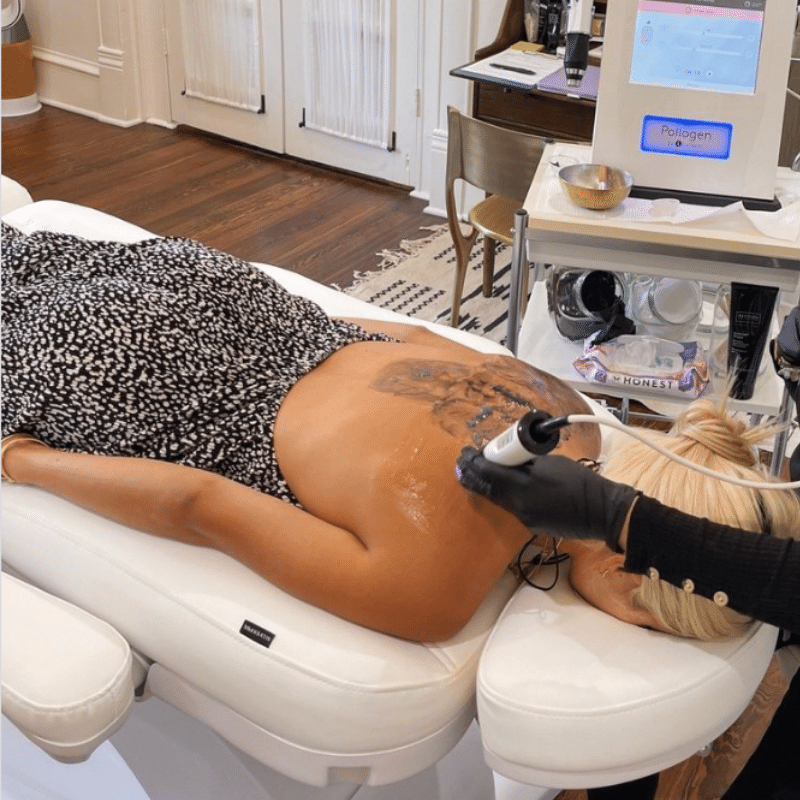
6. Full Body Facial + Full Body Exfoliation Spa Treatment
Sometimes you just need a fresh start. You can get a full body spa treatment that provides deep exfoliation to every inch of skin, removing dead skin cells and giving you a glowing complexion from head to toe.
What Is a Full Body Facial?
A full body facial treatment works just like a facial treatment for any other body part, but includes everything from your back, neck and decollete, arms, legs, butt, bikini, and anywhere else you would like a facial treatment.
You can also choose to have just certain areas treated, including a decollete facial, arm facial, or leg facial; or opt for a head-to-toe facial treatment.
Benefits of a Full Body Facial
There are many benefits to getting a full body facial:
- Deeply cleanses and moisturizes your skin from head to toe
- Relieves current blemishes and helps prevent future breakouts
- Oxygenates all your skin from the inside out
- Lets you look your best in any outfit or swimsuit
What Is a Full Body Facial Exfoliation Treatment?
At your full body facial exfoliation treatment, you’ll start by getting undressed. Your esthetician will apply the exfoliant in stages, and you’ll have a towel so you can cover up areas that aren’t being treated. Using either a mildly abrasive scrub or an exfoliating serum, the esthetician will rub the product into your skin to remove the barrier of dead skin cells. You’ll then rinse off and a moisturizer will be applied to hydrate your skin.
Which Glo2Facial Customization Works Best for Your Whole Body?
While any Glo2Facial customization will work well on your entire body, getting a full body facial treatment is a great opportunity to boost your skin’s hydration. The Glo2Facial Hydrate option enhances moisture retention, strengthens the skin barrier, and improves skin metabolism–all of which are great for every part of your body.
Benefits of a Full Body Facial Exfoliation Treatment
Full body exfoliation comes with many benefits:
- Provides deep relaxation as your specialist gently massages the product into your skin
- Increases blood flow and gives you glowing skin from top to bottom
- Offers much-needed exfoliation to areas that are hard to reach on your own
- Creates a smooth foundation for a spray tan which helps it last longer
Can Glo2Facial Provide Full Body Exfoliation?
Yes! All Glo2Facial Body Treatments include three stages: Exfoliation, Oxygenation, and Nourishment.
Here is what to expect in each stage of a Glo2Facial:
- Exfoliation:
- Natural ingredients in the Glo2Facial react with Primer Gel for gentle, non-invasive exfoliation and trigger the oxygenation process within the skin.
- Oxygenation:
- Glo2Facial’s oxygenation process triggers the body’s natural, physiological process of producing oxygen to increase oxygen levels internally within skin.
- Oxygen is carried to the surface of the skin where the heightened levels of oxygen prep the skin to absorb nutrients throughout the rest of the facial treatment.
- Nourishment:
- A blend of active ingredients is infused into your newly oxygenated and exfoliated skin during our ultrasound and neo-massage processes, allowing for maximum skin nourishment and hydration.
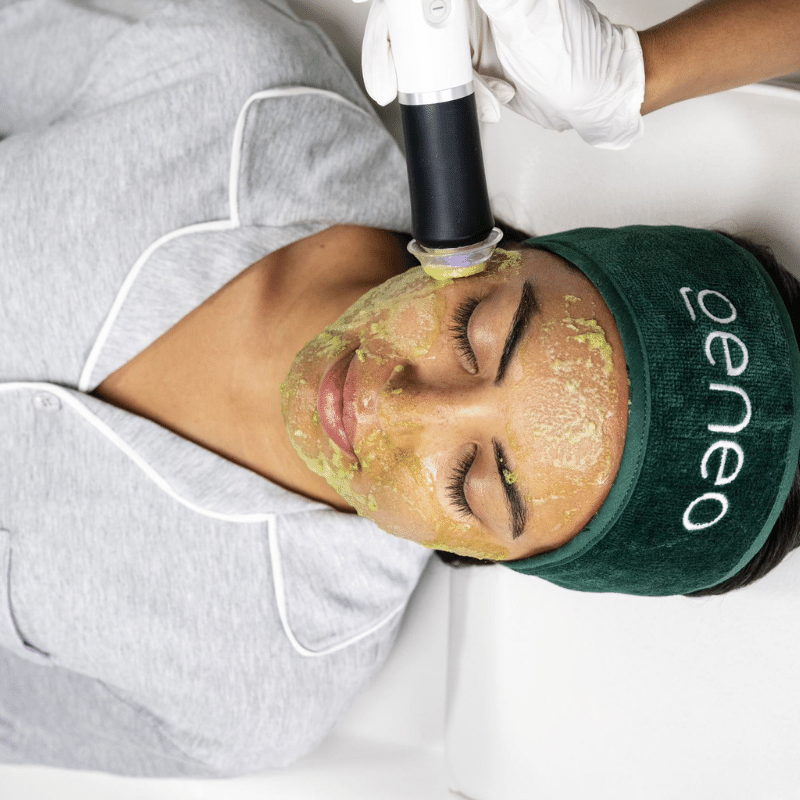
Ready to Look and Feel Your Best All-Over?
Though facial skin tends to get the most attention, all the skin on your body works the same way and needs regular care to keep it healthy. Whether you’re concerned about your back or your bikini line, full body spa treatments are available to help you cleanse, exfoliate, moisturize, and treat any area.
Glo2Facial provides gentle, targeted treatment using 100% natural ingredients, and each treatment can be customized to your skin’s unique needs with the power of our Glo2Facial customizations.
Ready for a head-to-toe glow? Click here to find a Glo2Facial provider near you.




